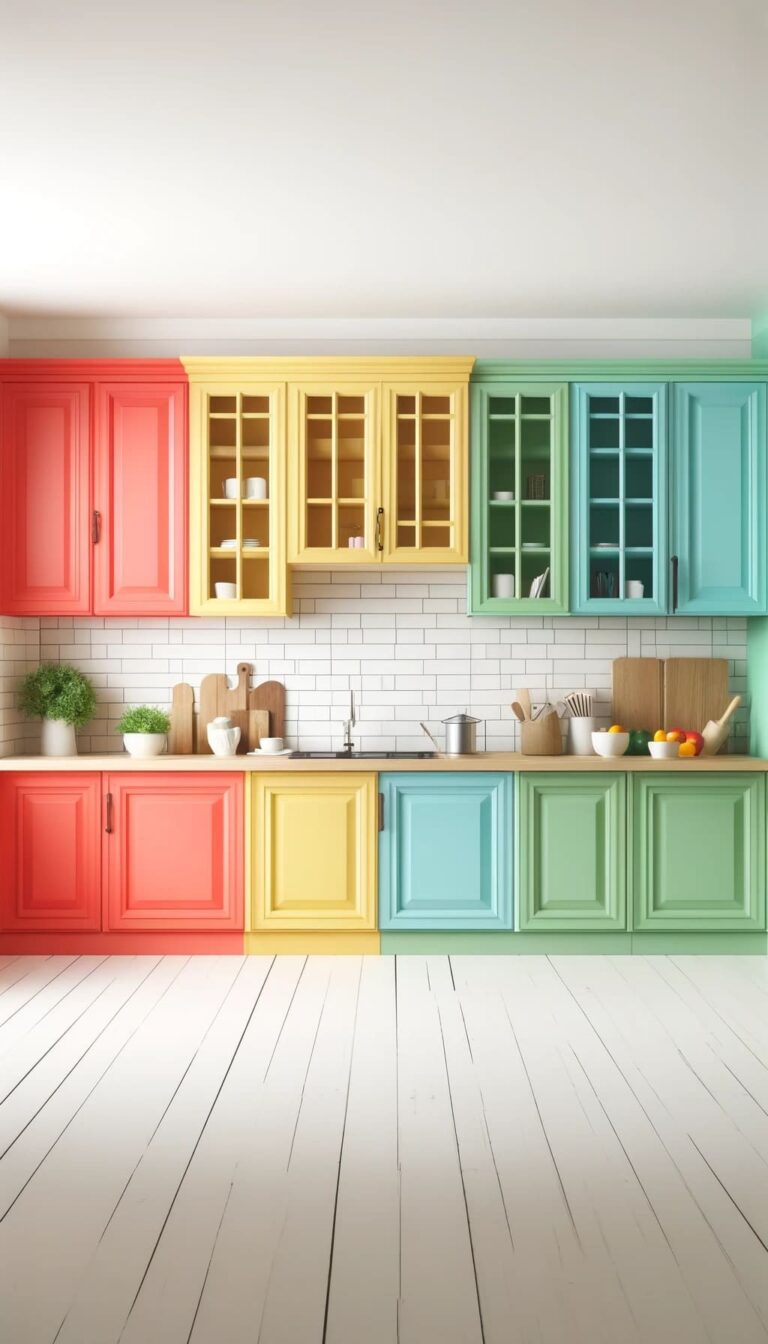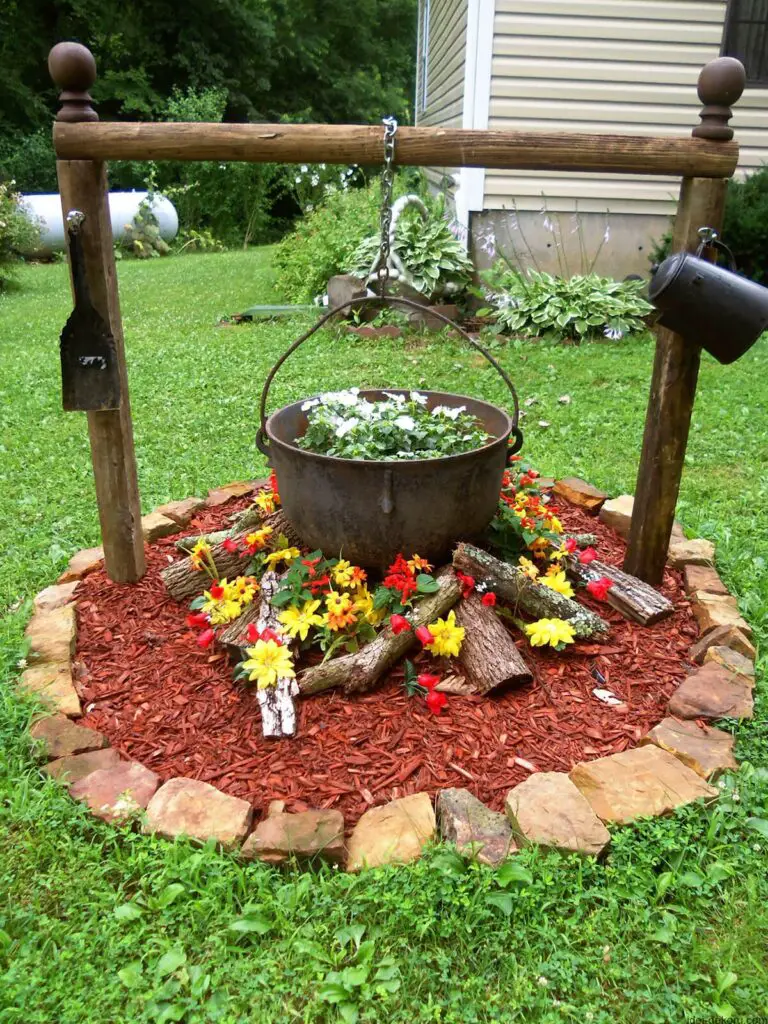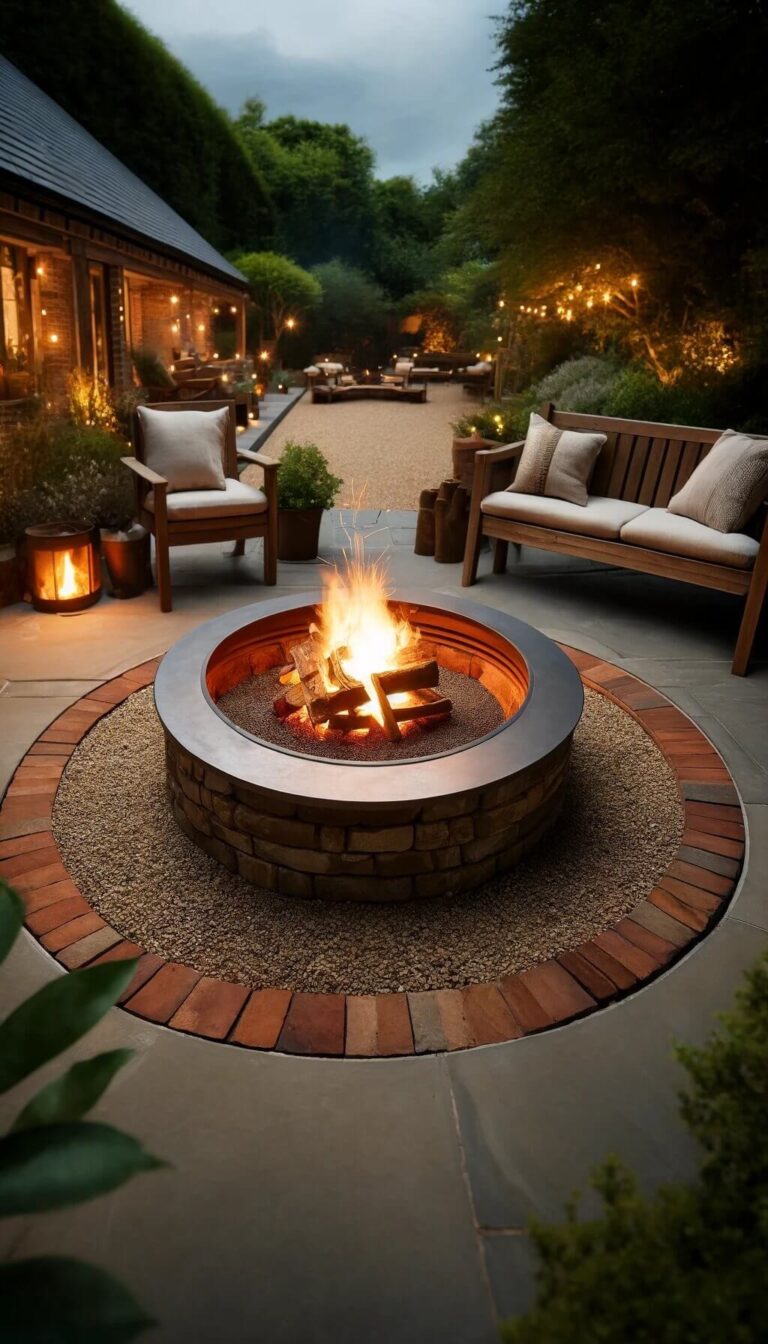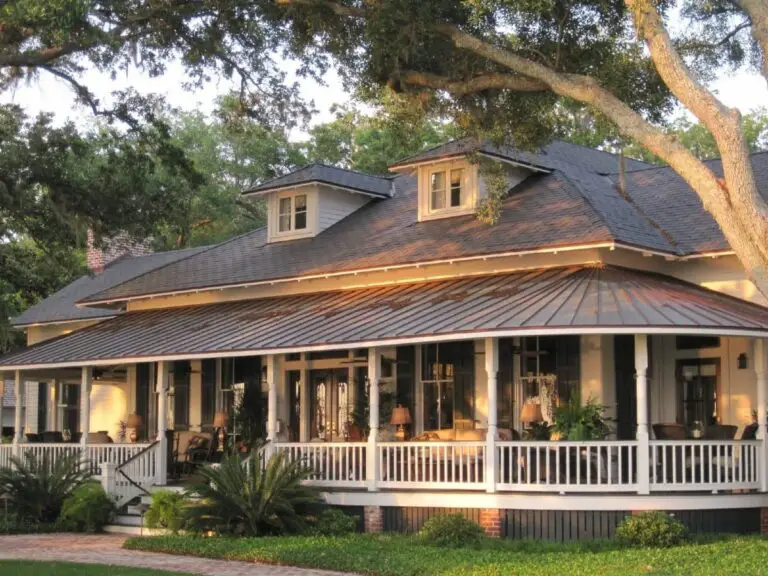77+ Beautiful Entryway & Foyer Lighting Ideas And Designs
The entryway of your home sets the tone for the entire space, and its lighting plays a crucial role in creating a welcoming atmosphere. Not only does it make a statement to your guests, but it also affects the overall ambiance and comfort level within your house. With so many options available, choosing the right type of lighting can be overwhelming. From chandeliers to pendant lights, each style has its unique characteristics, patterns, forms, hues, and sizes.
By selecting the perfect lighting for your entryway, you can transform the space into a masterpiece that reflects your personal taste.
77+ Entryway and Foyer Lighting Ideas
Chandeliers
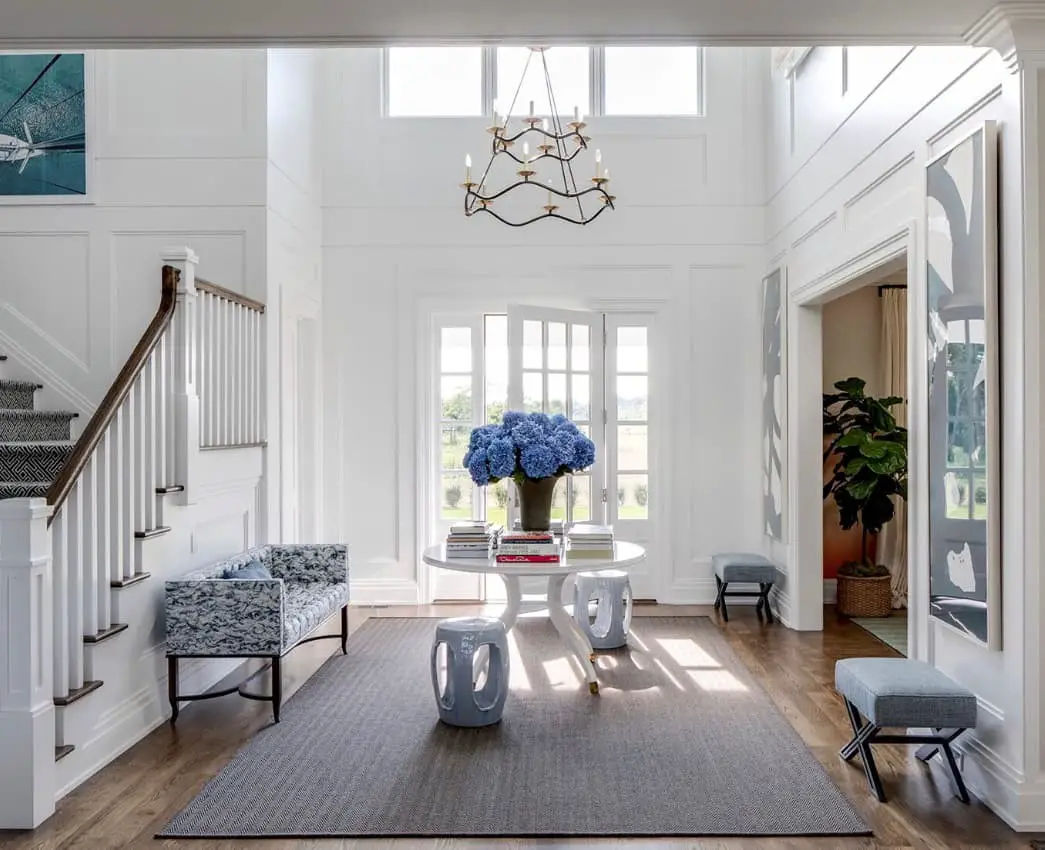
Chandeliers are an excellent choice for making a grand entrance in any property. These stunning fixtures excel at illuminating and enhancing the ambiance of rooms, particularly the entry foyer, where they can make a lasting impression on guests. With their intricate frameworks and numerous lights, chandeliers are commonly found in living rooms, lounges, corridors, dining areas, and other spaces where they add a touch of elegance and sophistication.
The variety of designs, styles, and sizes available ensures that there’s a perfect fit for any space, allowing homeowners to make a statement with their choice of chandelier. From the ornate girandole to suspended lights and candelabra lamps, each style brings its own unique flair and drama to the foyer.
Chandelier made of crystal
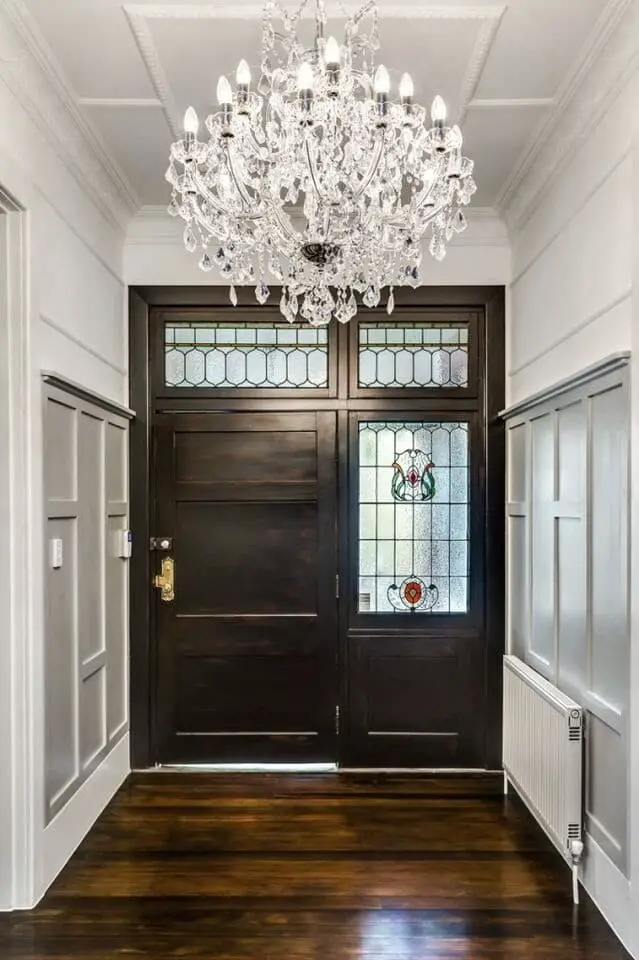
When it comes to crafting stunning crystal chandeliers, dangling crystal reflectors play a crucial role. Typically, these reflectors are made from lead crystal, which infuses the material with a range of distinctive properties, including resonance, softness, and unparalleled clarity. This unique blend of characteristics gives each piece its own distinct charm.
Furthermore, within the world of crystal chandeliers, there exists an impressive array of styles and patterns to explore, spanning from sleek modern designs to romantic and whimsical creations.
Chandelier with a cage
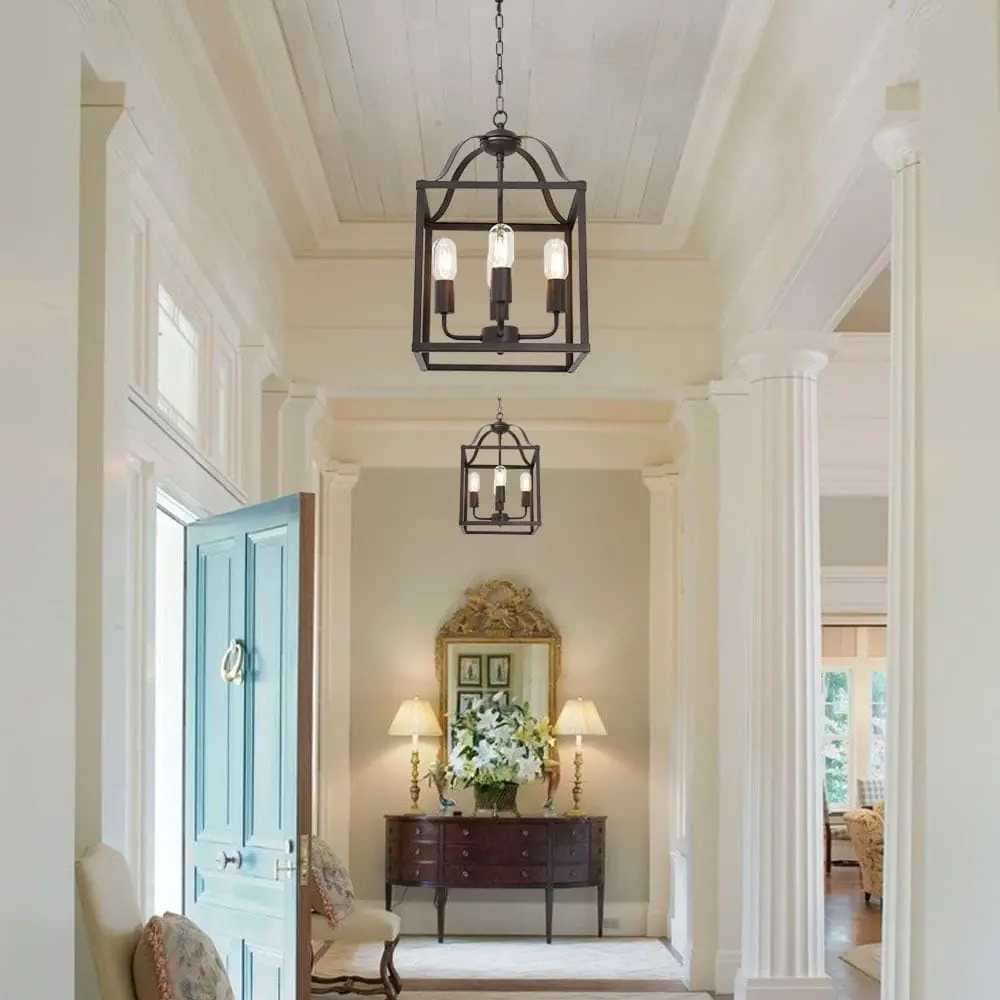
Steel caged chandeliers feature a unique design where metal structures replace traditional center stems, creating more space for innovative lighting fixtures, decorative accents like candles or other ornaments. The popularity of these types of chandeliers, often paired with shades, crystals, or candles in the middle, is evident in their widespread adoption and enduring appeal.
Chandelier in the Candle Style

Among the most popular choices for foyer chandeliers, the candle-style is a timeless favorite among many. Its appeal lies in its visually appealing design, which features lights cleverly crafted to resemble candles. This creates a warm and inviting ambiance, perfect for setting the tone for any home.
Characterized by multiple arms – typically five or more – each featuring a bulb-shaped candlestick, this type of chandelier exudes elegance and sophistication.
Foyer Bowl Chandelier

One type of chandelier bowl that has gained popularity is the suspended design. This features a metal, ceramic or glass bowl hung from rods, which creates an air of elegance and sophistication. The placement of lights in the middle of the bowl form allows them to reflect upwards, amplifying their effect and casting a warm glow downwards. As the light travels down through the bowl, it is softened and gently dispersed, creating a beautiful ambiance that can enhance any room in your home.
Pendants
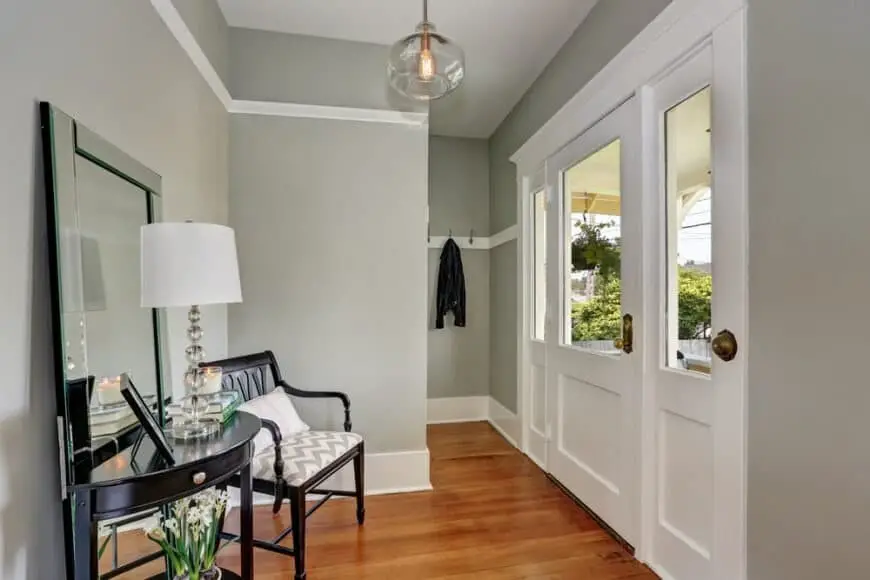
Pendant lights offer a sleek, modern twist on traditional entry foyer lighting, and can also be successfully used in more classical settings. Their unique design creates the illusion of higher ceilings, drawing the eye upward as the soft glow emanates from the suspended fixture. This type of light is mounted directly to the ceiling via a cord, chain or rod, earning them the nickname ‘drops’ or ‘suspenders’.
Pendants are particularly well-suited for dinette sets, entryways and kitchen worktops due to their ability to be hung in a straight line. In terms of appearance, contemporary pendants often bear a resemblance to chandeliers, with some featuring halogen or fluorescent bulbs, while others employ reduced power lighting.
Drum Light Fixture

This type of pendant gets its name from its distinctive drum-like shape, featuring a spherical metal frame covered with a stretched material or fabric. A slender rod or chain suspends the cylindrical pendant in mid-air, allowing it to dangle freely. The design allows for flexibility, as the base of the cover can be either closed or open, depending on personal preference and intended display location.
Notably, the shade’s color plays a significant role in determining how much light is allowed to pass through. Deeper hues will block more light, while lighter colors will allow a greater amount of illumination to filter through.
Pendant with a Saucer Bubble
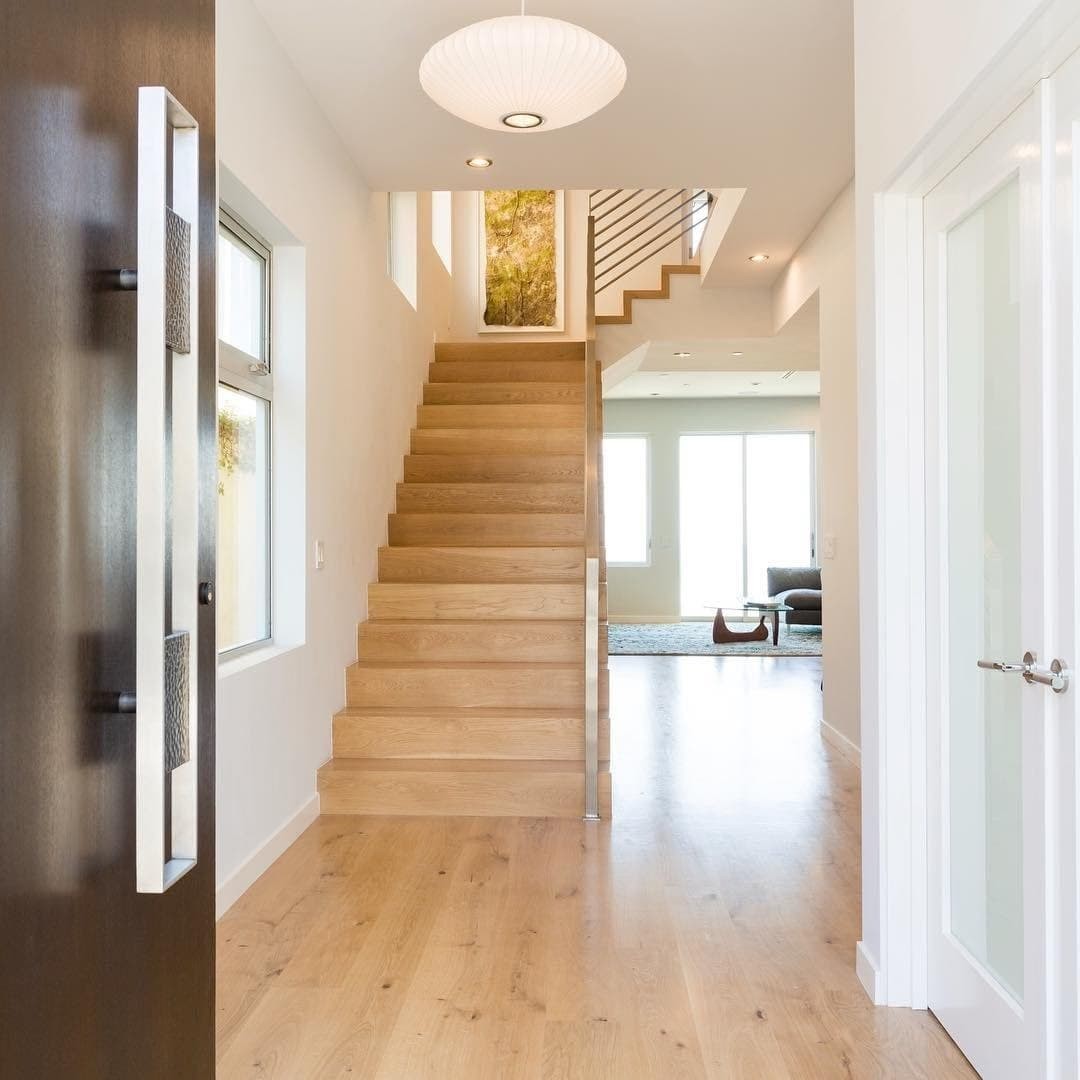
The iconic pendant lamp design, often attributed to its unique brand, has remarkably persisted across various trends and eras. The distinctive shape, dubbed a ‘bubble-saucer,’ appears to be simultaneously squeezed from both bottom and top, resulting in an intriguing visual. This particular design features a steel wire framework coated with transparent plastic, allowing for light transmission while minimizing glare.
Additionally, the use of supporting poles or chains enables the lamp to be suspended at varying heights, adding to its versatility.
Globe-shaped pendant
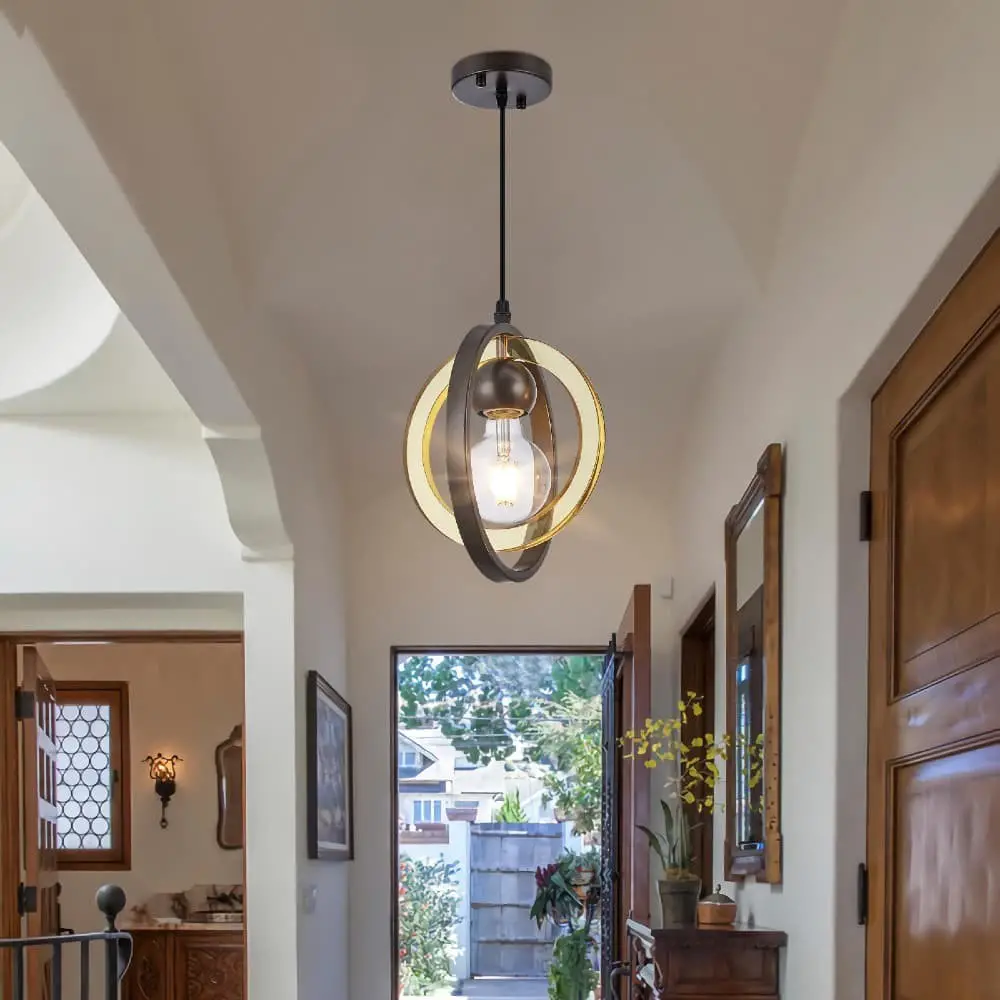
Globe pendants are instantly recognizable by their spherical shape, also referred to as orbs, globes, or spheres. Their mid-century aesthetic is a direct result of the evolution that occurred in the 1950s and 1960s. These eye-catching pieces typically consist of glass and incorporate bulbs or lights at their center, resulting in a highly luminous appearance.
While often worn alone, globe pendants can also be grouped together to create a striking display in an entryway or other prominent space. For the more adventurous type, experimenting with different drop lengths can add an extra layer of visual interest and sophistication.
Pendant Lights with Multiple Lights
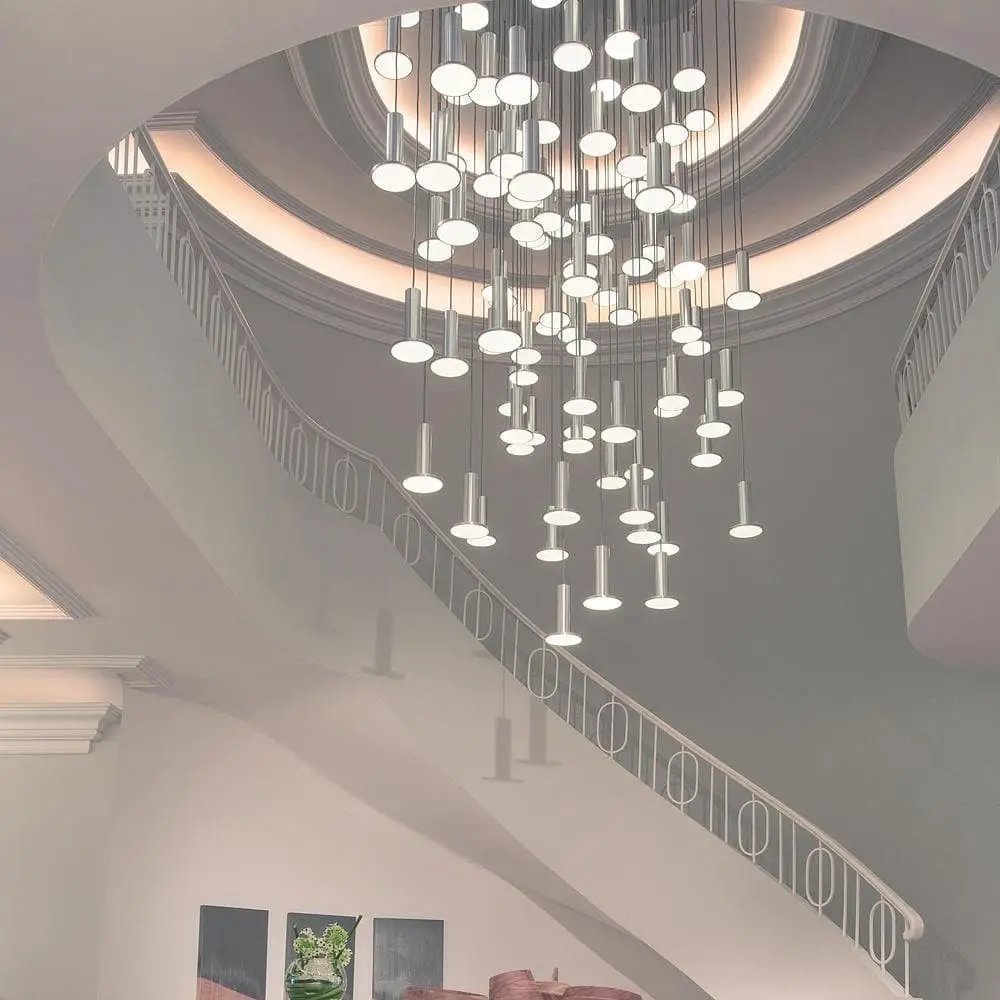
A distinctive feature of this pendant type is the presence of multiple individual lights clustered at the core of a single pendant. The design of the pendant itself is flexible, allowing you to choose any aesthetic you desire, as long as it incorporates several light fixtures. To prevent the various lights from competing with each other and producing an overwhelming glare, balance is crucial.
This can be achieved by having multiple rods or links emanate from a central point, with tiny bulbs or lights suspended at the ends of each chain or rod, creating a harmonious visual effect.
Pendants with an Abstract Design
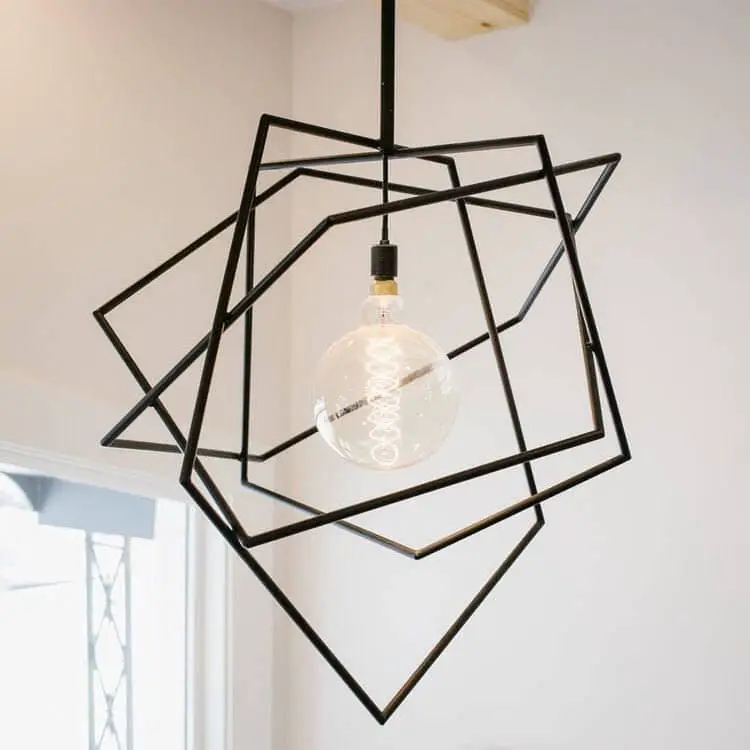
For foyer and corridor spaces where a unique ambiance is desired, these abstract pendants offer an exceptional solution. These innovative lighting designs are the result of continuous experimentation by lighting experts seeking to create fresh and creative ways for homeowners to elevate their homes’ décor with sophisticated illumination. Characterized by their irregular shapes and designs, these pendants bring a touch of artistic flair to any room.
Mounts that are semi-flush
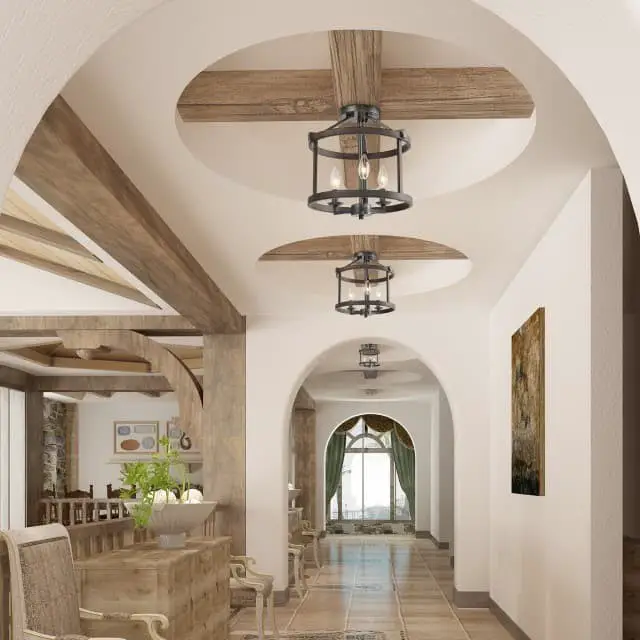
While sconces and chandeliers may steal the spotlight, flush mount lights offer a unique charm of their own. Characterized by their seamless integration with the ceiling, these fixtures are designed to fit snugly around a roof light bulb, creating a sleek and understated visual effect. Unlike other lighting designs, they don’t dangle from the ceiling, instead providing a clean and unobtrusive look that’s both functional and aesthetically pleasing.
Semi-flush mounts, in particular, deserve recognition as the unsung heroes of low-ceiling spaces. With their compact size, they’re perfectly suited for rooms with lower ceilings, allowing homeowners to add a touch of sophistication without sacrificing too much headroom. While they may not be showstoppers, semi-flush mounts are the perfect choice for those seeking a subtle yet impactful lighting solution.
Wall Sconces
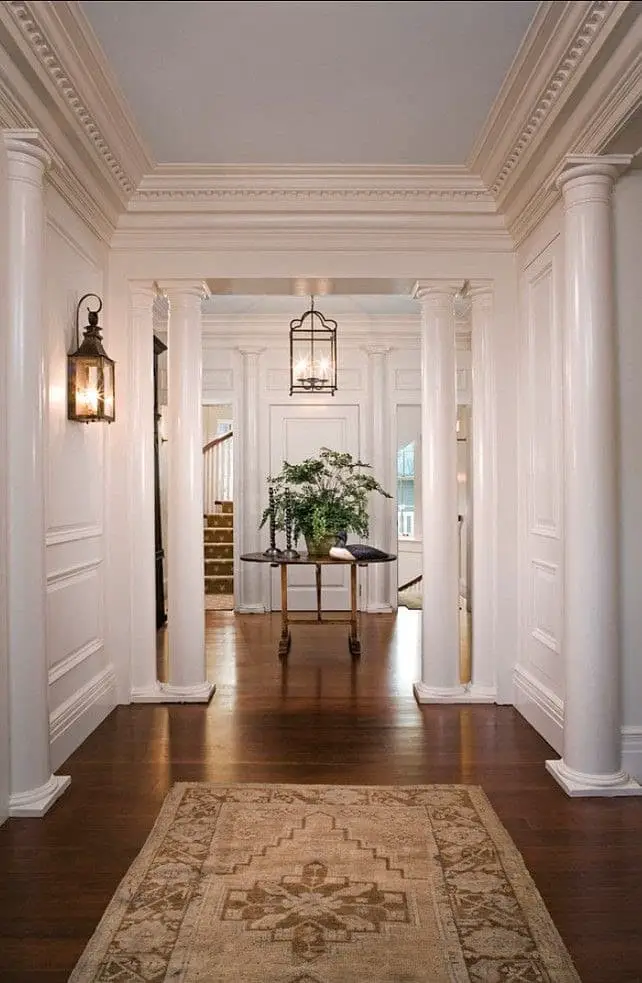
Wall sconces, often referred to as wall lights, are a versatile solution for any lighting need. These fixtures rely on being mounted to a wall for support, requiring electrical connections to function. Unlike other types of lighting, they don’t draw power from the ground or any other source. Historically, candle sconces were the norm, particularly in the 17th century when silver and bronze were popular materials.
As time progressed, ornate ormolu and ceramic fixtures gained popularity in the 18th century, marking a shift away from traditional metalwork.
Wall Sconce with Lantern
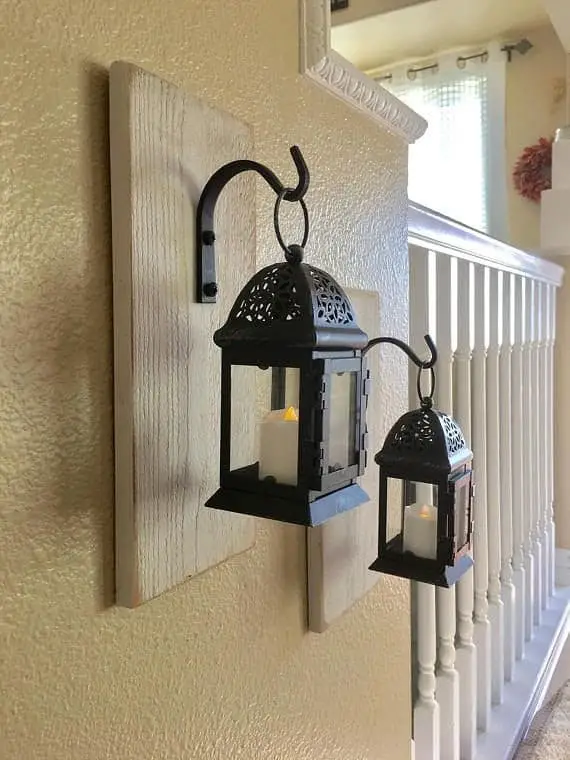
Lantern sconces bring a touch of classic elegance to outdoor lighting, making them a popular choice for homeowners seeking to add ambiance to their entryways. By allowing natural light to flow through, these fixtures create a warm and inviting atmosphere that sets the tone for a beautiful home. Placed strategically on any wall, the soft glow emanating from within the lantern creates a sense of serenity and sophistication, making them an ideal solution for illuminating any exterior space.
Wallchieres

What sets these sconces apart is their striking decorative flair, which distinguishes them from other wall lights. The meticulous craftsmanship on display is truly remarkable, showcasing the attention to detail that has gone into creating each piece. The name ‘Wallchieres’ pays homage to its unique blend of a wall lamp and a torchiere floor lamp, resulting in a lean, high, long, and slim design that’s as sleek as it is eye-catching.
With their focus on elaborate details and embellishments, Wallchieres are often used indoors to create a show-stopping effect that elevates the overall aesthetic of your home.
Half Moon/Flush Mounted

Wall sconces have long been a favored lighting style, and for good reason. The flash-mounted variety stands out for its compact size and ease of installation against any wall. This versatility allows it to be used both indoors and outdoors, offering a range of styles, colors, and patterns to suit every taste. One notable feature of crescent moon or burst mounted sconces is their ability to cast an ambient glow that illuminates the entire wall.
The effect is so striking that it creates the illusion that the wall itself is aglow, adding an undeniable touch of sophistication and visual appeal to any room.
Sconces for Candles
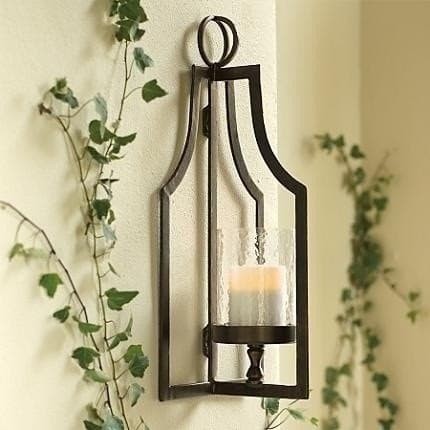
In recent years, candle sconces have experienced a resurgence in popularity, evoking a sense of nostalgia for the past. The era when candles were used for lighting has given way to modern bulbs that mimic the aesthetic of vintage candlesticks. This retro-inspired trend is particularly prevalent indoors, where homeowners seek to create an atmosphere reminiscent of bygone eras.
Available in a variety of materials such as iron or steel, wood, and brass, these sconces offer a rustic charm that can be effortlessly incorporated into contemporary spaces.
Lighting in the Recesses

Recessed lighting fixtures, also known as pot lights, can lights, or downlights, are a staple of modern interiors. These fixtures typically sit within a circular opening or aperture in the ceiling, projecting their light downwards in a recessed manner that gives the illusion of emanating from a hollow space. The resulting fixture takes on a cylindrical shape reminiscent of a pot or canister. This type of lighting has a rich history, dating back to ancient times.
In fact, it was the Kirlin Company in Detroit, Michigan that pioneered the development of recessed lights in the 1940s.
Strip lighting with LEDs
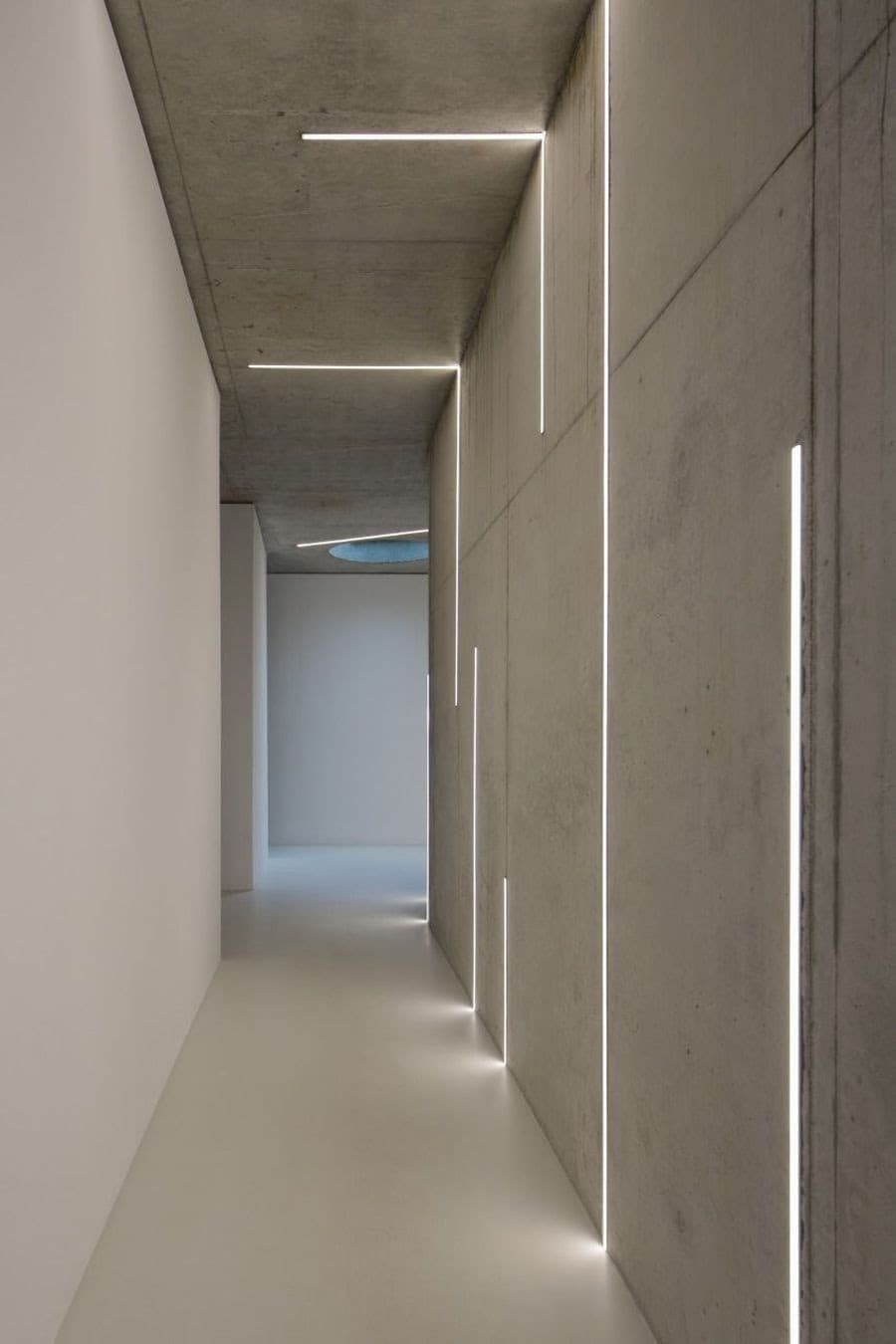
Innovative contemporary minimalism lighting has taken the design world by storm with its unparalleled adaptability and flair for the dramatic. Characterized by sleek, sophisticated forms, these lights bring a fresh perspective to any space, effortlessly elevating your home’s aesthetic appeal. Their versatile designs allow them to be seamlessly integrated into various settings – from walls to ceilings to furniture.
Whether you’re looking to make a bold statement or simply add a touch of modernity, contemporary minimalism lighting is sure to impress.
Lamps
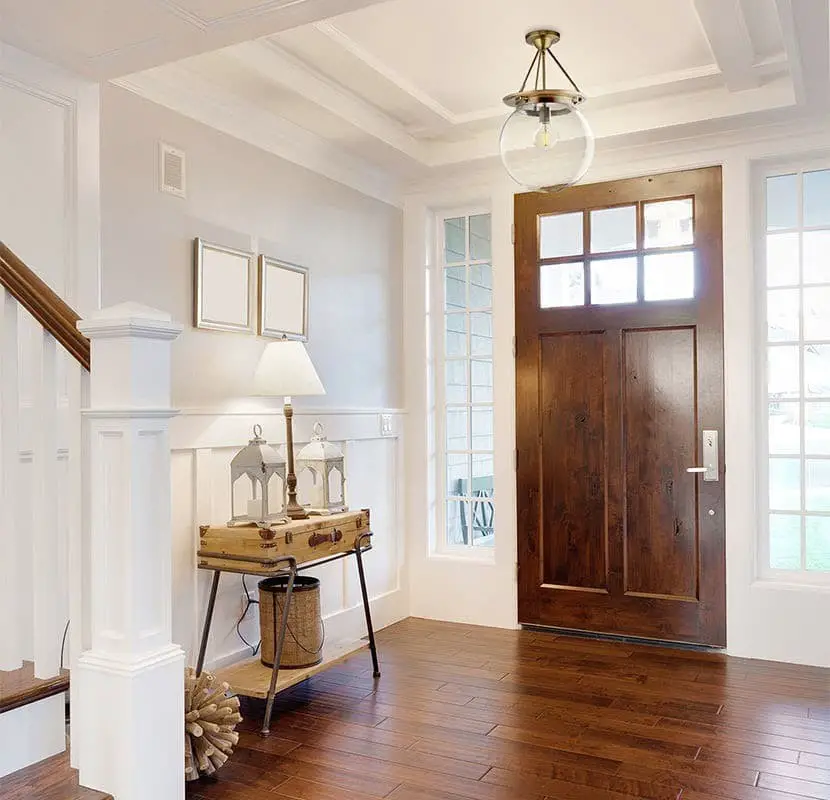
While lamps may appear old-fashioned at first glance, they possess a timeless quality that ensures they never truly go out of style. Despite their physical presence, they bring an artistic touch to any room, making them a thoughtful solution for all your lighting needs – whether you prefer standing lamps or table lights. One of the best aspects of lighting is its versatility; lamps can be easily rearranged to suit changing moods and styles. Want to give your entry foyer a fresh new look?
Simply reposition those lamps! Additionally, experimenting with different bulb types allows for subtle tweaks to the ambiance, allowing you to achieve the perfect balance of coolness and warmth in your home.
Shapes should be carried through.
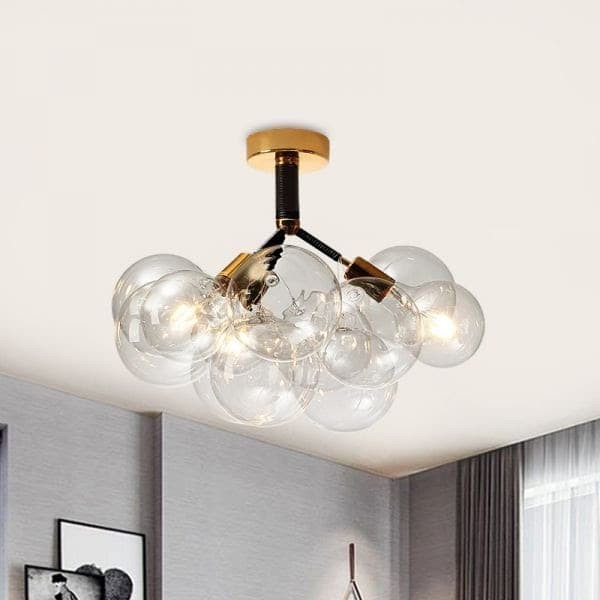
When designing a space, it’s essential to create visual cohesion by mirroring lighting fixtures with components throughout the area. For instance, in a square or rectangular layout, a geometric pendant light with rectangular-framed glass panels can be paralleled with similar shapes in other design elements. This harmony adds depth and visual interest to your layout. Alternatively, you can opt for contrasting materials to create a striking focal point.
By either matching or juxtaposing elements, you’ll achieve a balanced and visually appealing space.
Reflection and Repetition
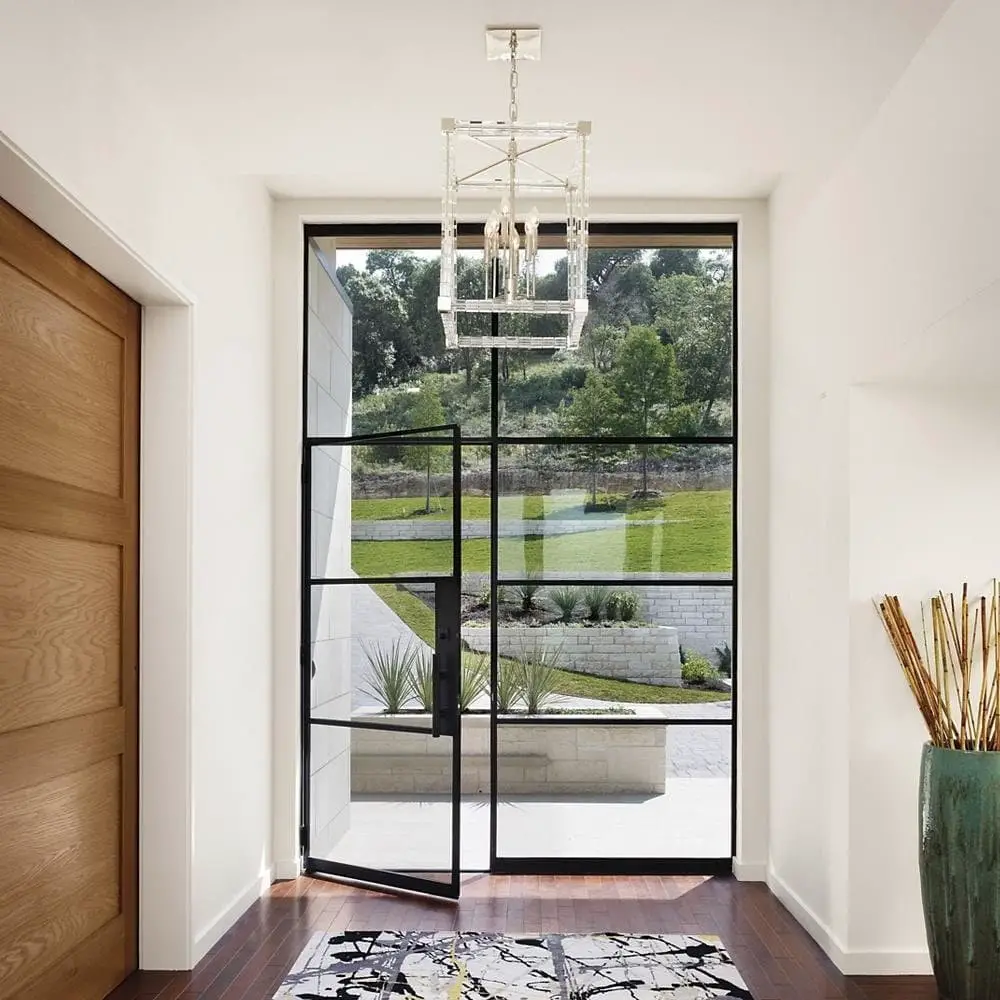
To elevate the aesthetic appeal of your doorway, incorporate recurring geometric themes or patterns between light fixtures and surrounding elements. This subtle approach doesn’t require identical shapes; instead, focus on coordinated features that create a sense of harmony. For instance, slats on a door can be cleverly referenced by an open chandelier composed of metal strips, subtly tying the two together.
Go for the glitz.
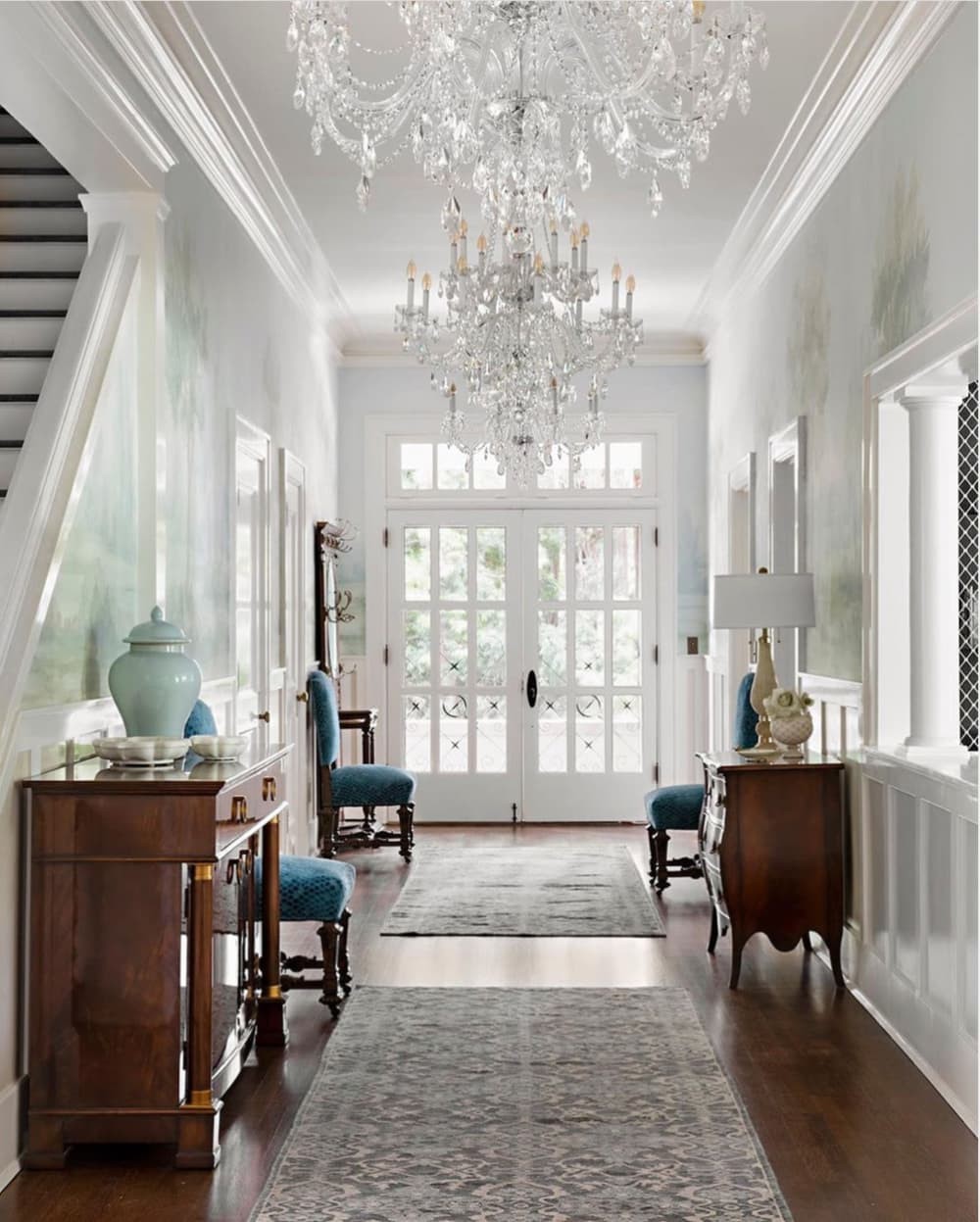
Elevate your entrance with a modern take on the classic crystal chandelier. By incorporating multiple arms reminiscent of a candelabra, you can achieve a striking visual effect that perfectly balances traditional elegance with contemporary flair. The combination of sleek metal fixtures paired with delicate glass bulbs will not only reflect light but also create a sense of depth and dimension.
As a result, your doorway will be transformed into a sophisticated space that seamlessly blends classic charm with modern sophistication.
Obtain Enough Lighting
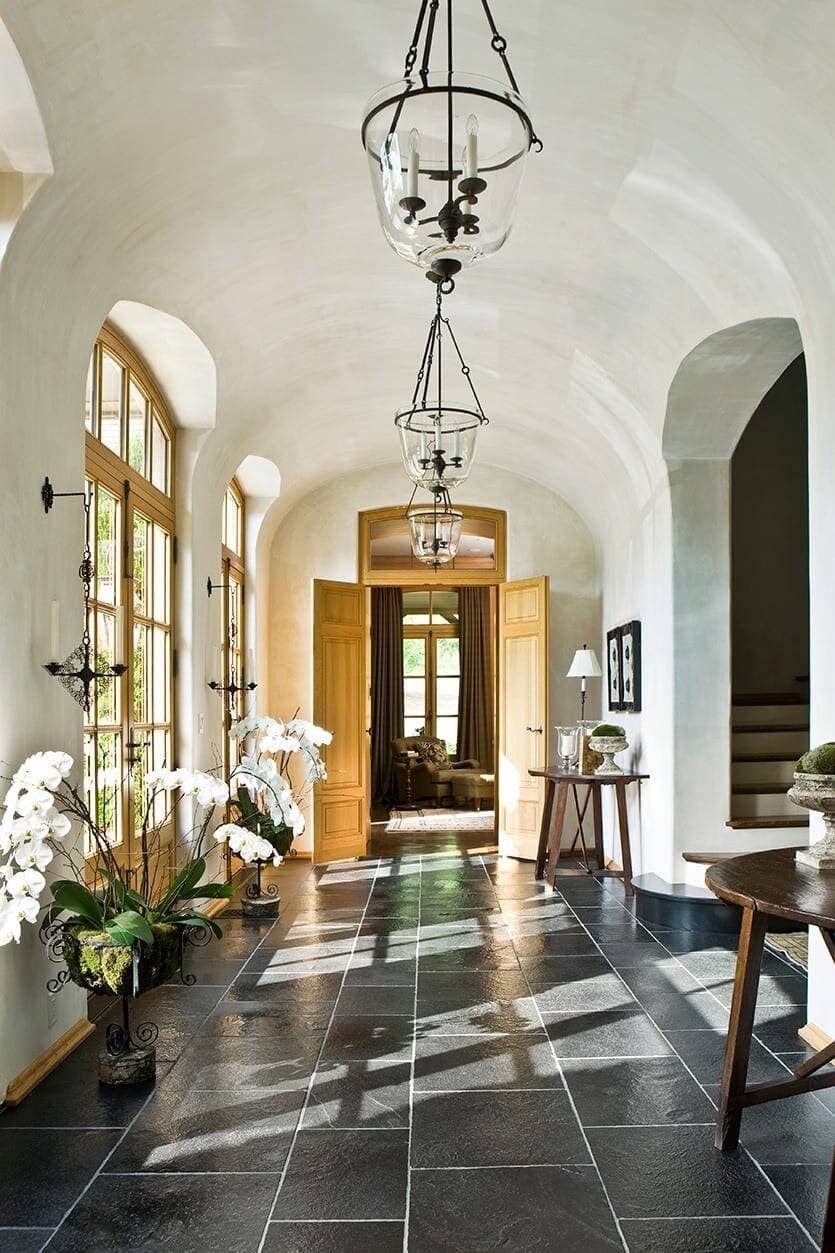
When crafting your visual aesthetic, don’t forget to consider the lighting aspect as well. A well-designed entrance light should not only enhance the ambiance but also ensure a safe and comfortable transition in and out of the space. This means providing sufficient illumination to illuminate any potential hazards or obstacles. Supplementing above-light fixtures with wall sconces, foyer tables, or jacket racks can help fill in any gaps and provide additional brightness where needed.
Unity is achieved by consistency.

Consistency is key when it comes to creating a cohesive look in your exterior entryway. One effective way to achieve this is by using the same fixture throughout the area, rather than introducing different lights at various points. This approach creates a sense of continuity and makes the space feel more unified as you move from one location to another.
By applying this principle to your lighting design, you can create a visually appealing and harmonious entryway that welcomes visitors with warmth and style.
Clearance On Classics

For a timeless entryway look that doesn’t compromise on functionality, consider installing semi-flushmount lights with medium to low ceilings. This style offers a classic flair without overwhelming the space or creating an obstacle for those passing through. By dropping just below the ceiling level, these fixtures provide ample headroom while maintaining a clear path for traffic flow.
Put the Lights Away
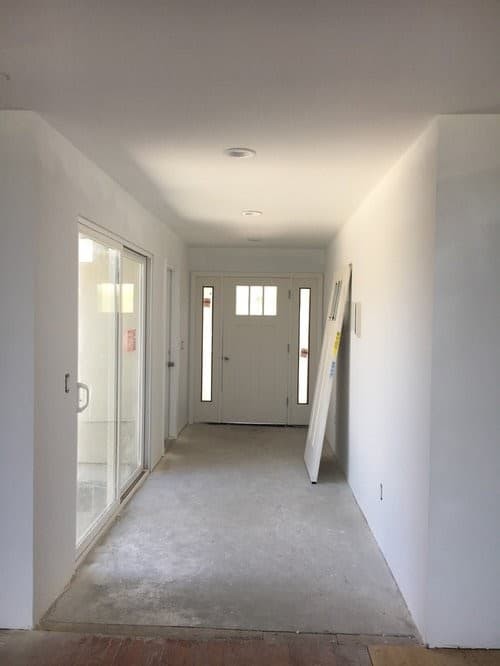
When dealing with limited spaces like narrow doorways or low ceilings, recessed lighting fixtures or flush mounts can be an excellent solution to provide sufficient illumination without compromising on aesthetics or functionality. These streamlined lights blend seamlessly into the environment, making them a perfect fit for contemporary and minimalist design schemes. By choosing these options, you can create a well-lit space that also respects the constraints of its layout.
Just a smidge covering
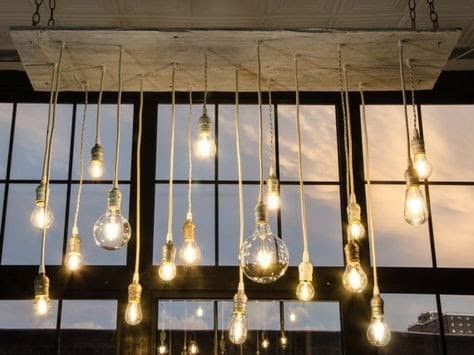
When it comes to rustic modern lighting, Edison-style bulbs offer a unique aesthetic appeal. However, their exposed filaments can sometimes be overwhelming. A compromise is to opt for fixtures featuring lightly or seeded frosted glass. This subtle diffusion helps to soften the glare emitted by the bulb, creating a more harmonious atmosphere in your room.
Keep it in the Bloodline
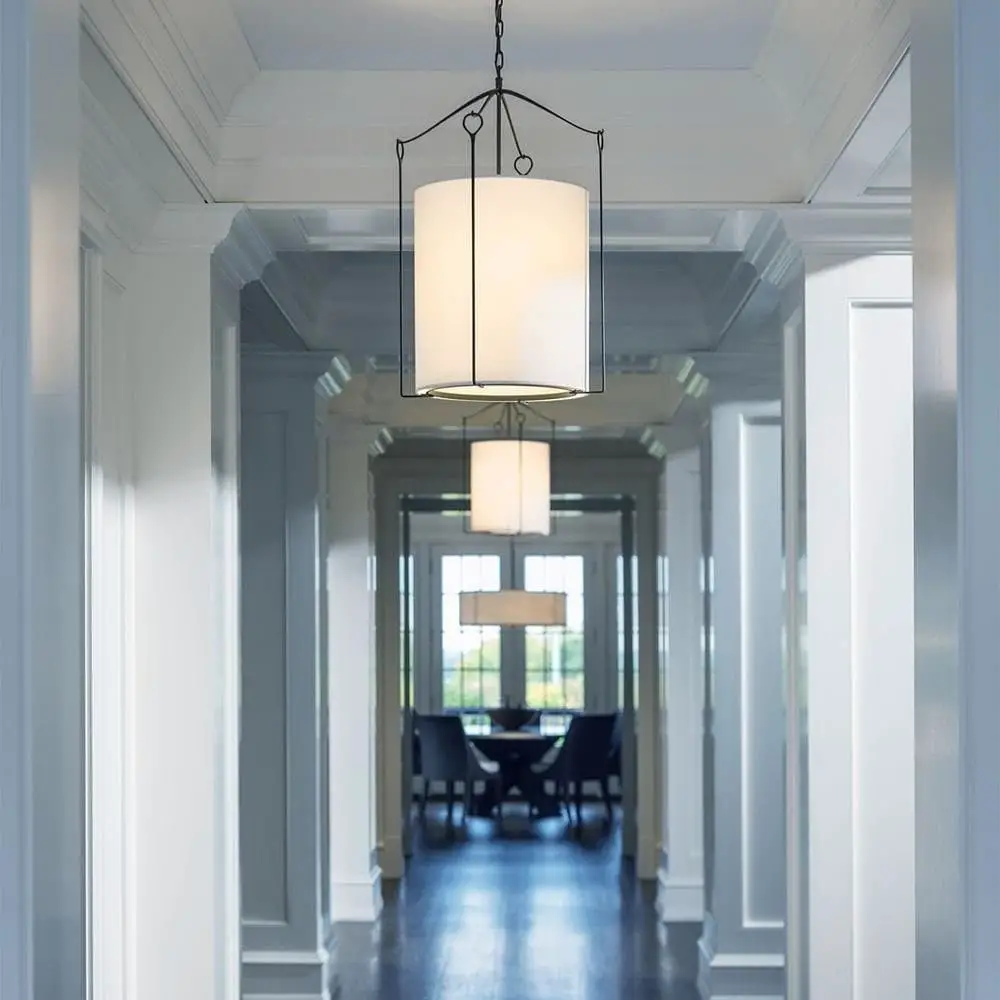
To create visual continuity throughout your home, consider repeating chandelier styles across different areas. While the fixtures themselves may not be identical, ensure they share a common design aesthetic to foster a sense of cohesion and harmony. This approach can effectively connect your entryway to adjacent spaces, creating a seamless flow.
Big and Brave

In spacious areas like tall stairways and expansive ceilings, a dramatic lighting fixture can be the perfect focal point. A show-stopping chandelier, whether its sleek and modern or classic and elegant, has the power to captivate attention from the moment visitors enter the space. The grandeur of the fixture draws the eye upward, emphasizing the verticality of the space and creating a striking visual impact that sets the tone for the rest of the area.
It’s a Big Deal
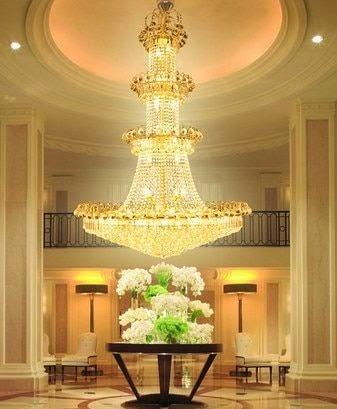
Incorporate a striking focal point like a majestic chandelier suspended within a spacious atrium or grand hall. The visually stunning piece draws inspiration from Sputnik’s iconic design, creating an optical illusion that appears to propel the viewer’s gaze upwards towards the ceiling, as if reaching for the sky. This thought-provoking installation not only captures your audience’s attention but also cleverly communicates your artistic vision and creative direction.
Differences should be highlighted

While it’s essential to consider the overall aesthetic of your entryway, don’t be afraid to introduce unexpected contrasts that can add depth and visual interest. For instance, if your room features soft curves and organic shapes, a bold geometric chandelier can create a striking juxtaposition. This type of contrast can inject energy and movement into the space, making it feel more dynamic and engaging.
Allow the stars to shine on their own.
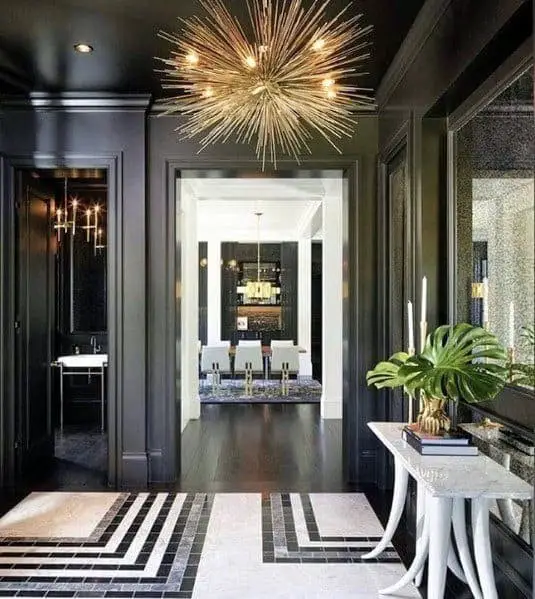
When choosing a show-stopping chandelier for your foyer, it’s essential to balance its grandeur with the surrounding décor and furnishings. To avoid overwhelming the space, consider keeping the area relatively minimalist in terms of furniture and decorations. This approach allows the chandelier to remain the focal point while preventing it from dominating the room’s overall aesthetic.
It’s Curvy That Does It

A drum pendant can create harmony by mirroring and highlighting the curves of an entryway’s defining features, such as molded wall cutouts or a winding staircase. The arcs don’t need to match perfectly; they simply require sufficient similarity to evoke a sense of continuity with the architecture’s character.
Welcome to your new home.
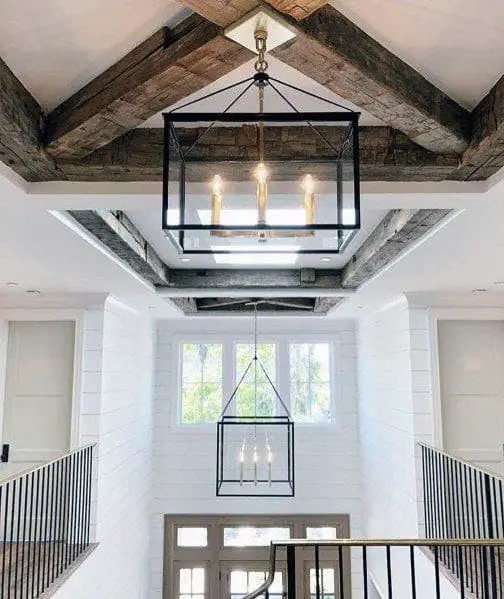
In the absence of sufficient lighting, an exterior entrance can feel eerily cavernous. To counteract this effect, consider creating a sense of continuity by installing identical fixtures on either side of the door and extending a matching outdoor pendant fixture further down the hallway to create a warm and inviting atmosphere for arriving guests.
Capiz Chandelier

Capiz chandeliers bring a touch of sophistication and luxury to any room while drawing inspiration from nature’s beauty. These unique lighting fixtures feature translucent oyster shells, carefully crafted by Filipino artisans who have been using this natural material for thousands of years. The delicate shells are designed to filter light, casting a warm glow that is both inviting and elegant.
While Capiz chandeliers can evoke a coastal feel, their neutral palette and luminous finish make them suitable for contemporary, transitional, and modern settings as well. With each shell hand-cut and carefully arranged in an intricate design, no two pieces are alike, adding to the uniqueness of this natural material. The result is a stunning piece that not only adds ambiance to any space but also tells a story of craftsmanship and cultural heritage.
In this KOUBOO chandelier, 1,545 Capiz seashells are carefully arranged in an elegant formation, anchored by a matte silver iron frame. The honey-hued shells cast a soft light, making it perfect for use as an entryway fixture.
FAQs
What is a foyer in a house?
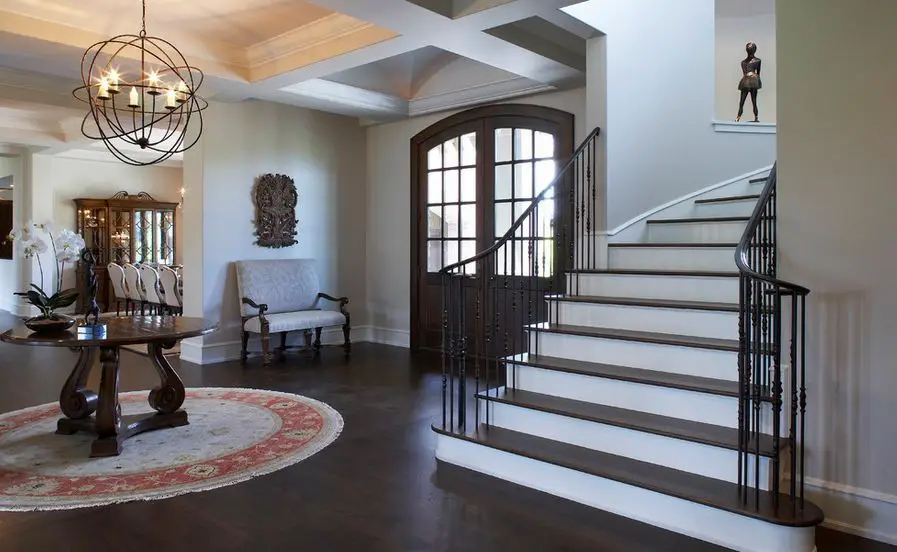
The entryway, also known as the foyer, serves as the first impression visitors have of your home. As such, it’s essential to decorate this area thoughtfully, as it sets the tone for the entire space. The foyer is often considered a distinguishing feature of well-designed homes, and an architect once aptly noted that ‘the difference between a rich man’s house and a poor man’s house is that the former has a foyer in theirs.’
How bright should a foyer light be?
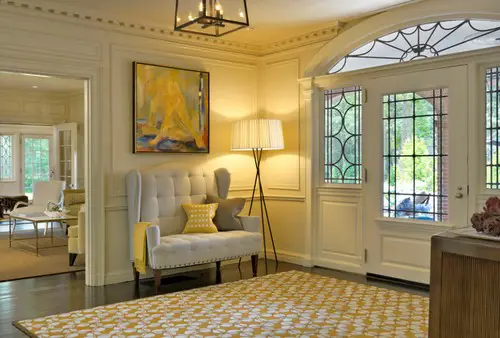
A household’s first impression often begins at the entrance, making the foyer a crucial space to get right. To create a warm and inviting atmosphere, it’s essential to allow maximum sunlight into the foyer. While natural light is ideal, supplementary lighting can also play a significant role in setting the tone.
Lamps and lights with a good Color Rendering Index (CRI) rating, typically ranging from 2700K to 3000K, are particularly effective at providing adequate brightness without being too harsh or overwhelming.
How big should my foyer light be?
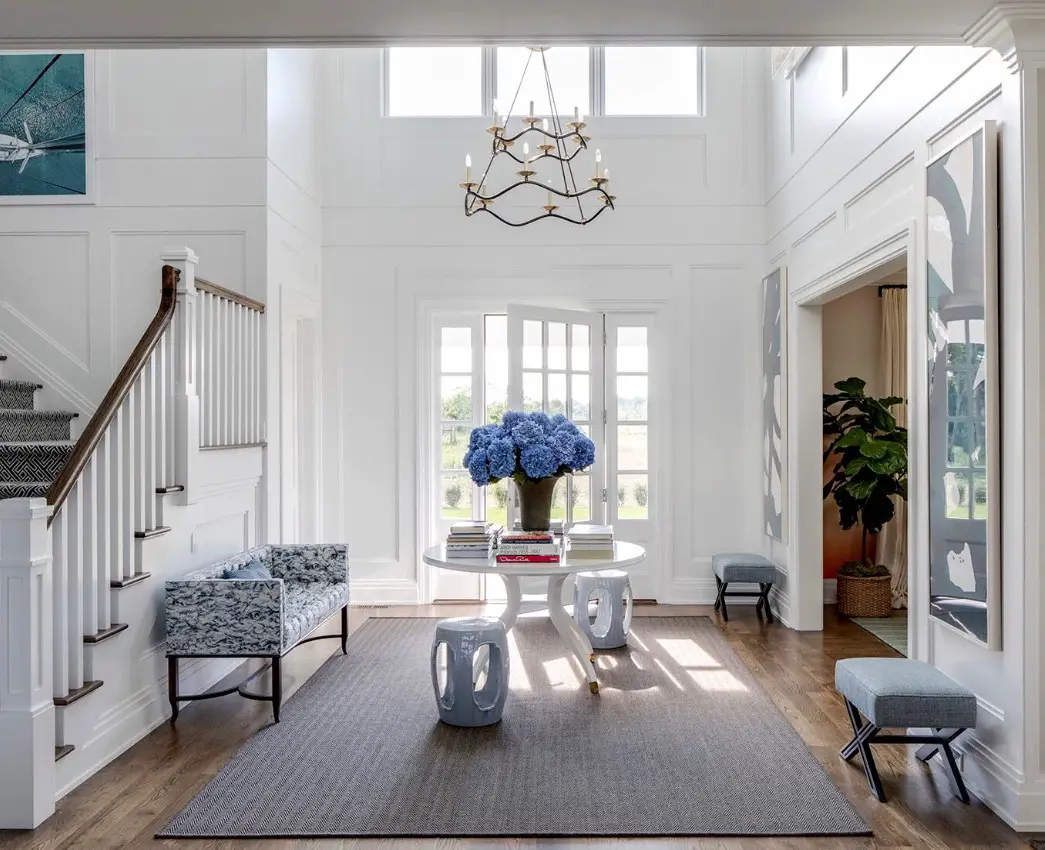
When it comes to illuminating a foyer, several factors come into play. The size of the area, the height of the ceiling, and the specific light requirements all contribute to the overall ambiance. A popular choice for foyer lighting is the chandelier, which can be strategically placed in the center of the room to create a stunning focal point. From a design perspective, it’s essential to consider the ratio of lighting fixture to ceiling height.
For every inch of clearance, the chosen fixture should be roughly twice or three times that height. By taking these factors into account, homeowners can create a beautifully lit foyer that sets the tone for the rest of the home.
How low should foyer lights hang?
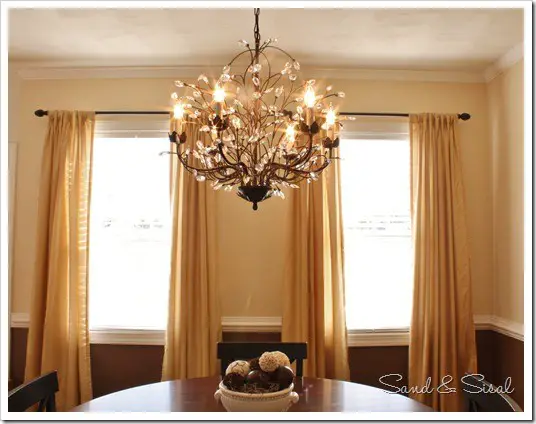
When it comes to placing lighting fixtures in a foyer area, the height at which they should hang depends on the type of lighting used. A general rule of thumb is that the lighting fixture should be suspended at least eight feet above the floor. This ensures a clear path and prevents any obstructions. It’s also important to consider the clearance below the chandelier or other fixtures to ensure safe passage.
How do you hang a foyer chandelier?
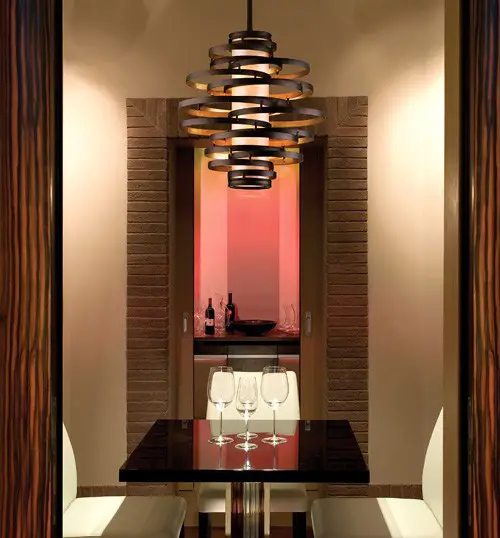
A foyer chandelier can be installed in a variety of ways, offering homeowners flexibility and design options. The most common methods include suspending the fixture from the ceiling using chains or installing it permanently for a more fixed appearance. When choosing a foyer chandelier, there are numerous styles to consider, each with its unique characteristics.
Some popular types include crystal, glass, beaded, candle-shaped, lampshade-shaped, caged, bowl, drum, rustic, romantic, vintage, and modern designs, as well as those featuring antler accents.
How many lumens does a foyer need?

When it comes to calculating the ideal light requirements for your foyer, one crucial factor is the area of the space itself. To determine the necessary lumen requirement, start by calculating the total square footage of your foyer. Next, you’ll need to consider the recommended foot-candle measurement for a foyer – a standard that can vary depending on local government guidelines.
As a general guideline, most experts agree that 1,500 to 2,000 lumens are sufficient to provide adequate lighting in a typical foyer setting.
What kind of light goes in an entryway?
In many homes, chandeliers in various sizes can be found adorning entryways and foyers. When paired with a soaring ceiling, a chandelier can serve as an ideal lighting solution, effectively bathing the space in warm, inviting light. Not only does this create a welcoming ambiance for guests upon arrival, but it also adds a touch of elegance to the overall aesthetic.
How big should the entryway light be?
When it comes to designing suspended lighting fixtures, there’s a tried-and-true guideline that experts swear by: the fixture should be positioned approximately 2 to 3 inches above the ceiling height. This means that for an entryway with a 10-foot-tall ceiling, the chandelier or other decorative light would ideally stand at around 20 to 30 inches tall.
Where should a foyer light be placed?
In single-story entryways, it’s common to suspend chandeliers at a height where the bottom of the fixture is no lower than 7 feet and 6 inches above the ground, typically when ceilings are between 9 and 12 feet tall. For two-story entryways, however, the base of the chandelier should be aligned with the second floor level, allowing for a seamless visual flow.
How bright should a foyer light be?
When selecting a chandelier for your foyer, ensure it has a power output of 200 to 400 watts to provide sufficient illumination. This range will not only meet safety standards but also create an inviting ambiance that complements the architectural design of your home. It’s crucial to choose light bulbs with sufficient brightness to effectively illuminate the corridor, striking a balance between functionality and visual appeal.
Foyer-lighting low ceiling ideas
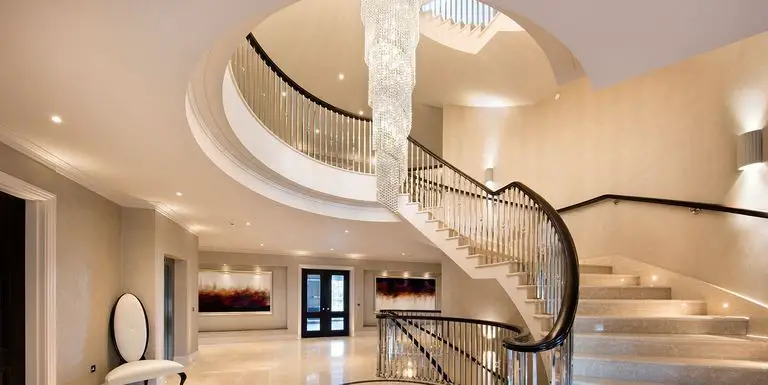
When it comes to illuminating a low-ceiling foyer, there are several lighting options that can effectively brighten up the space without making it feel cramped. Flush mounts, recessed lightings, LEDs, pendant lights, ceiling lamps, cluster lighting, cone-shaped and hanging lamps can all be used in harmony with one another to create a warm and inviting atmosphere.
Additionally, cloth-based low-hanging chandeliers and recessed lighting solutions can also be employed to add depth and visual interest to the space.
Multi pendant foyer light
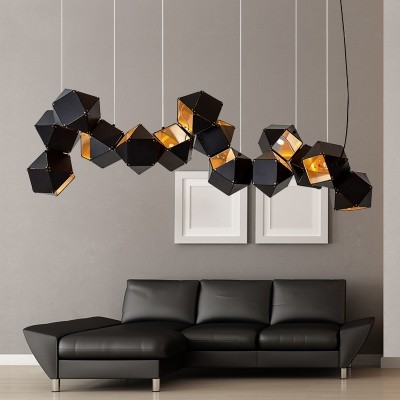
In modern interior design, cluster lighting has become a popular trend, typically featuring multiple pendant lights suspended together to create a striking visual display. This type of lighting is often used above entryways, dining rooms, or study areas to add ambiance and sophistication.
A variety of styles can be achieved through the combination of different numbers of pendants, colors, shapes, and designs, including three-pendant configurations, multi-colored options, six-color schemes, geometric forms, cascading light fixtures, cylinder-shaped pendants, and globe-shaped designs.
Small foyer lighting ideas
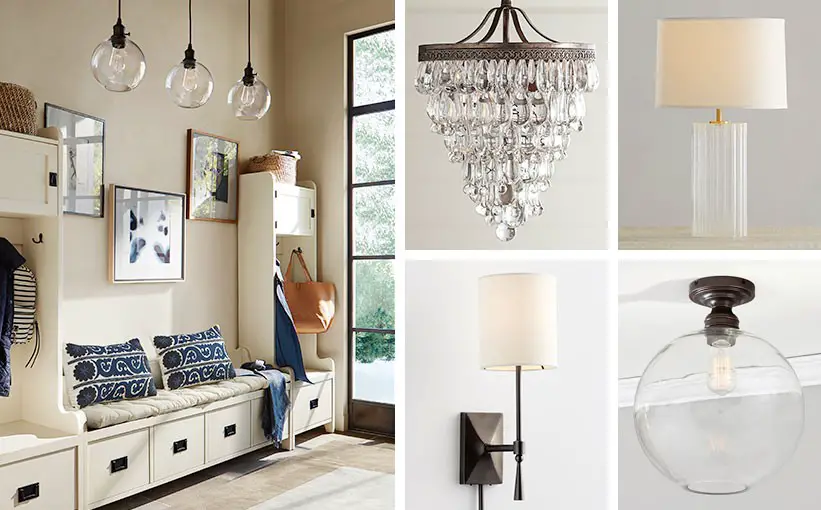
To illuminate a compact foyer, consider incorporating a variety of lighting fixtures to create a visually appealing and functional space. Recessed lighting can add subtle ambiance, while wall sconces provide focused task lighting. Small globe chandeliers and pendant lights offer a touch of elegance, and rectangular pendants or 4-light foyer pendants can add a sense of grandeur.
By combining these options, you can create a unique and inviting atmosphere that makes the most of your small foyer’s space.
Coastal foyer lighting ideas
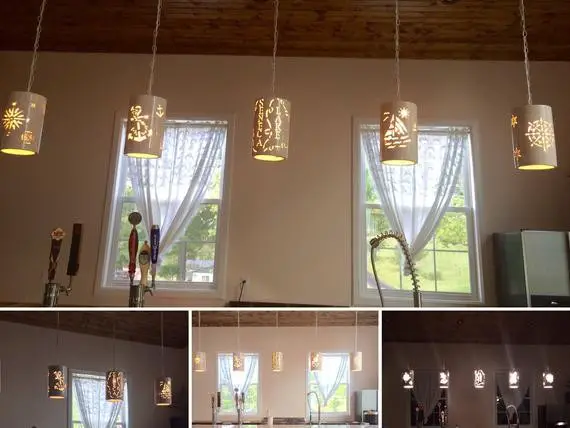
Coastal lighting fixtures are designed to evoke the feeling of a beachside getaway. This theme is often incorporated into various types of lighting, including table lamps, floor lamps, and chandeliers. To achieve this coastal look, designers might use sea-inspired shapes, such as shells or pearls, or create unique lamp shades that resemble fish or coconut trees. Handcrafted bulbs with net patterns can also add a touch of the ocean to any room.
By incorporating these elements, homeowners can bring the calming atmosphere of the beach into their own homes.
Farmhouse foyer lighting ideas

When it comes to lighting up your farmhouse foyer, you can’t go wrong with a combination of table lamps, pendants, and sconces. For a warm and inviting ambiance, consider using farmhouse-themed lighting fixtures that feature lighting-on-the-floor designs. Alternatively, add some rustic charm with pumpkin-shaped sconces or metallic strips covered in cotton or a rug, finished off with a light pendant at the end.
The possibilities are endless when it comes to creating a welcoming entrance to your home.
Entryway foyer lighting ideas

When it comes to illuminating an entryway foyer, there are several lighting options available. Consider using staircase tracking lights, which follow the natural movement of your family members as they ascend or descend the stairs. Alternatively, string lighting can add a warm and cozy ambiance to the space. For a more dramatic effect, install a single-piece horizontal globe chandeliers that can be adjusted to suit your desired level of brightness.
If you want to create a relaxing atmosphere, ambiance lighting is another option worth exploring. And for a high-tech solution, smart lighting systems can be programmed to turn on and off at specific times or in response to motion detection. Finally, cluster lighting can be used to create pools of light that guide visitors through the space.
Front door foyer lighting ideas
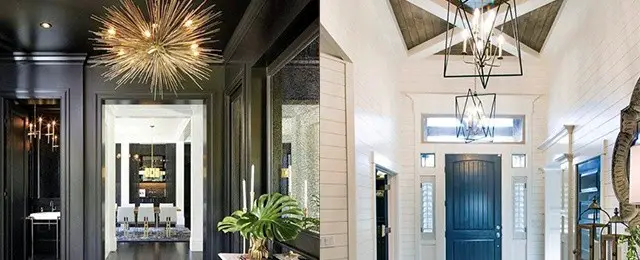
To add a touch of modern flair to your home’s exterior, consider incorporating cutting-edge lighting concepts into your front door foyer. This can be achieved by utilizing innovative designs such as wreath-lighting, tree lighting, and shrub-pot lighting. These unique approaches allow for a dynamic and visually appealing ambiance that enhances the overall curb appeal.
More foyer lighting ideas


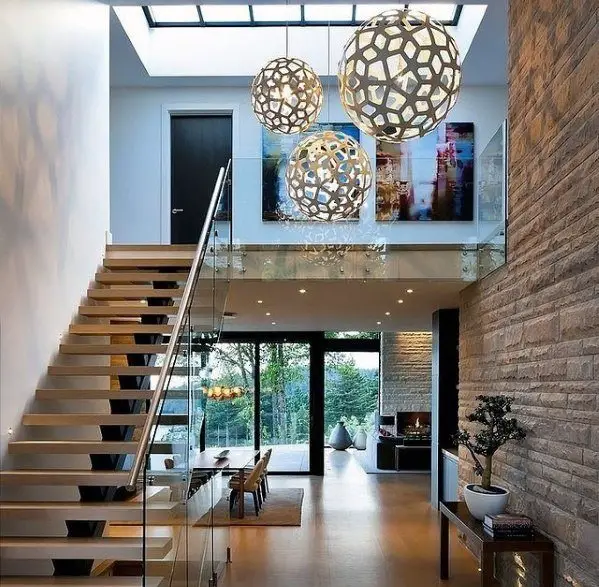



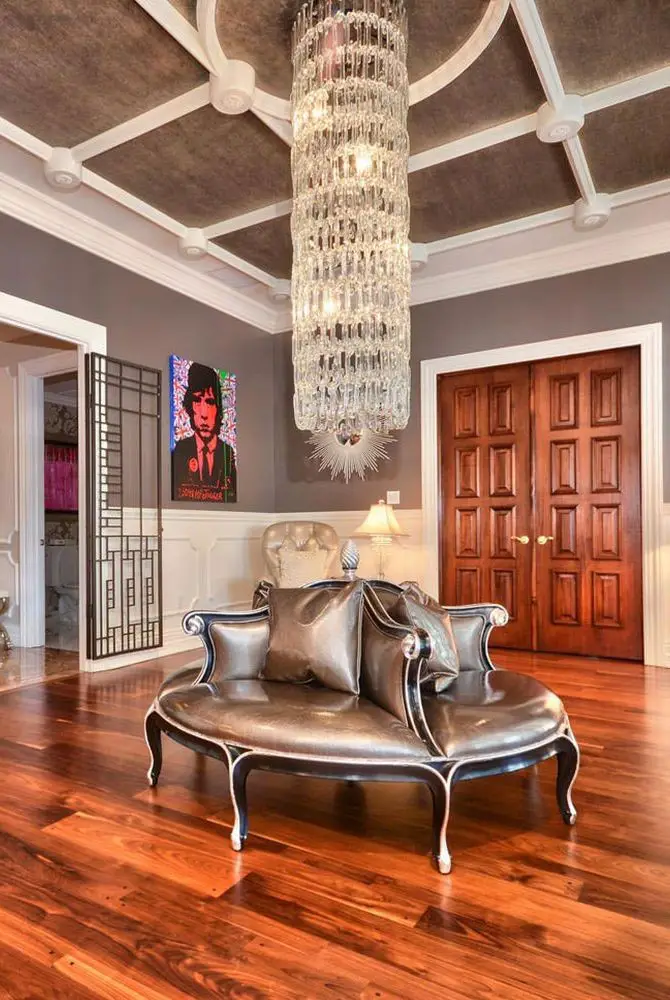
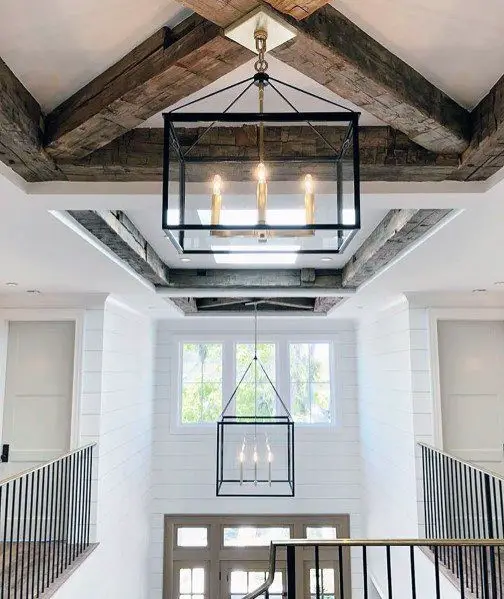
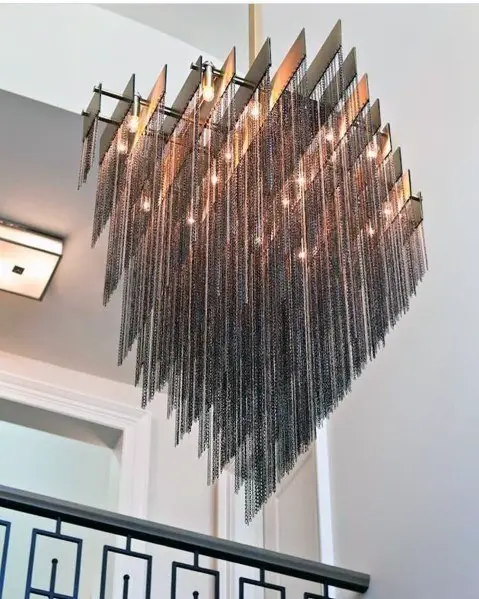


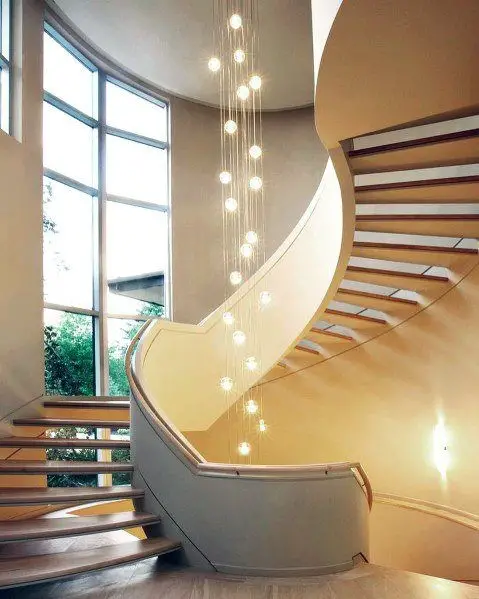
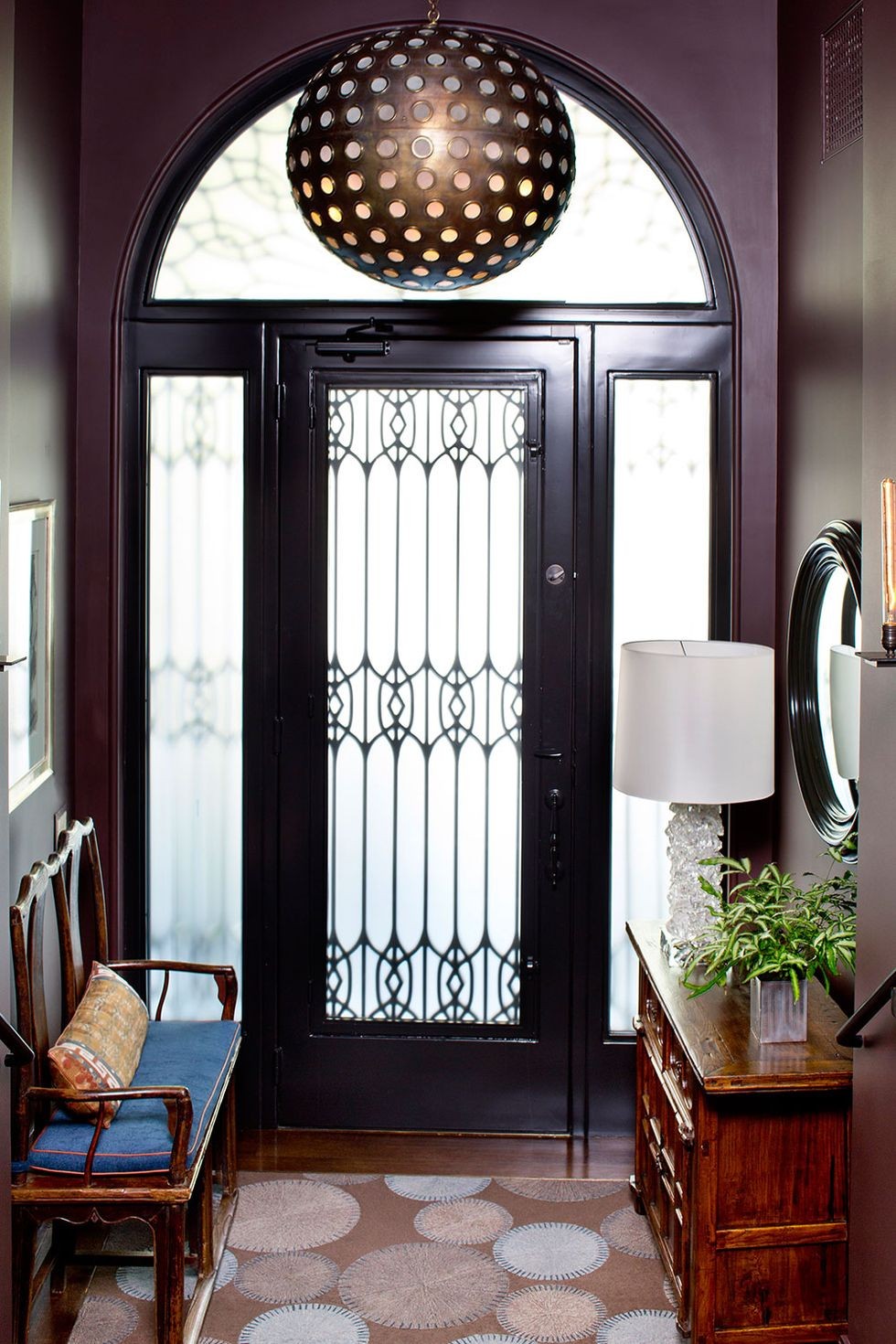



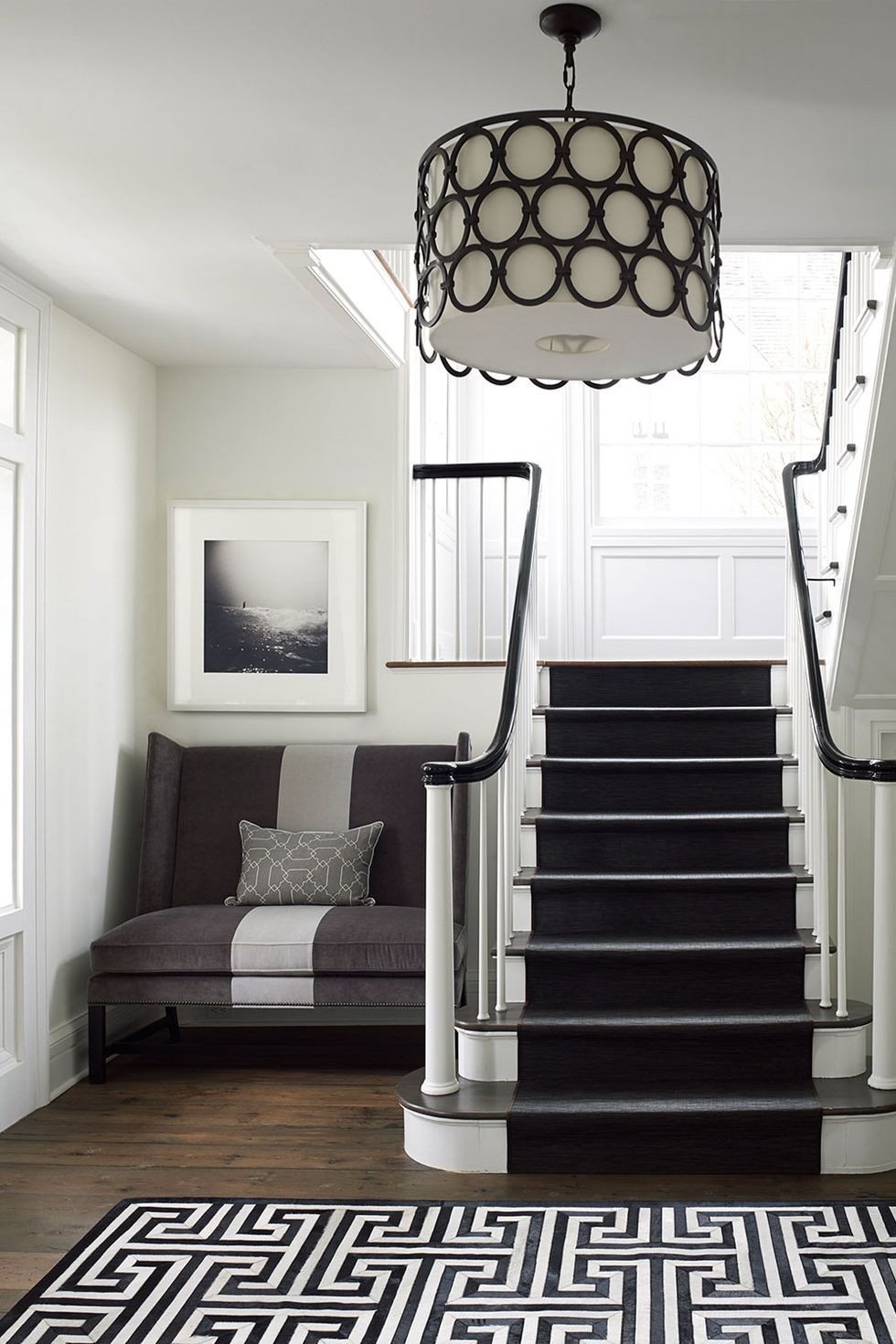



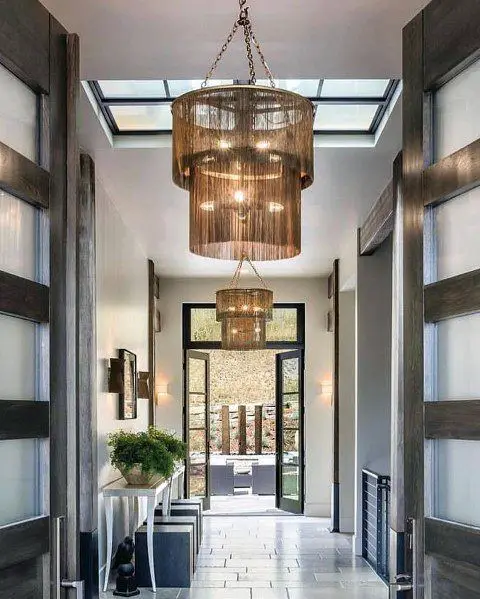
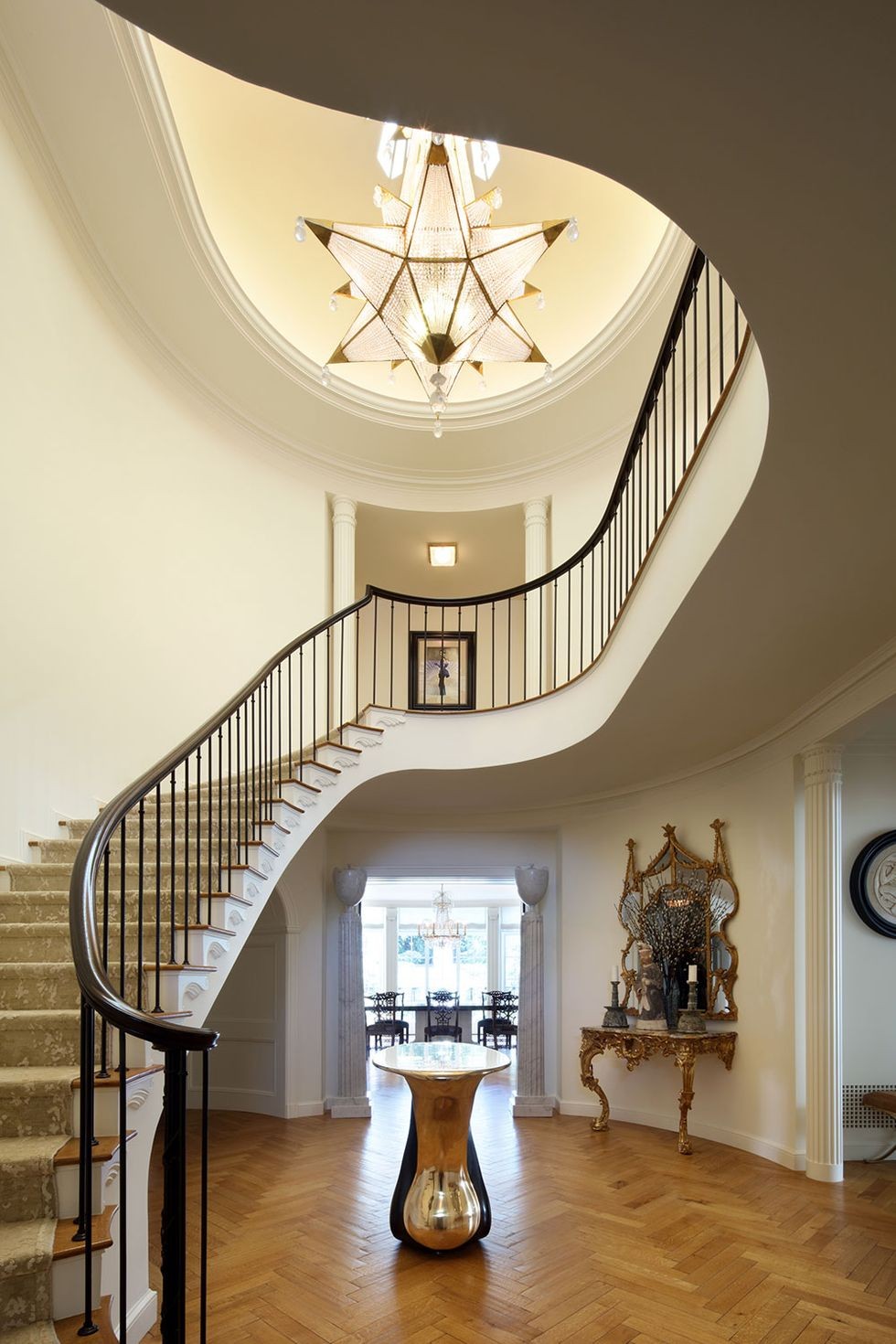



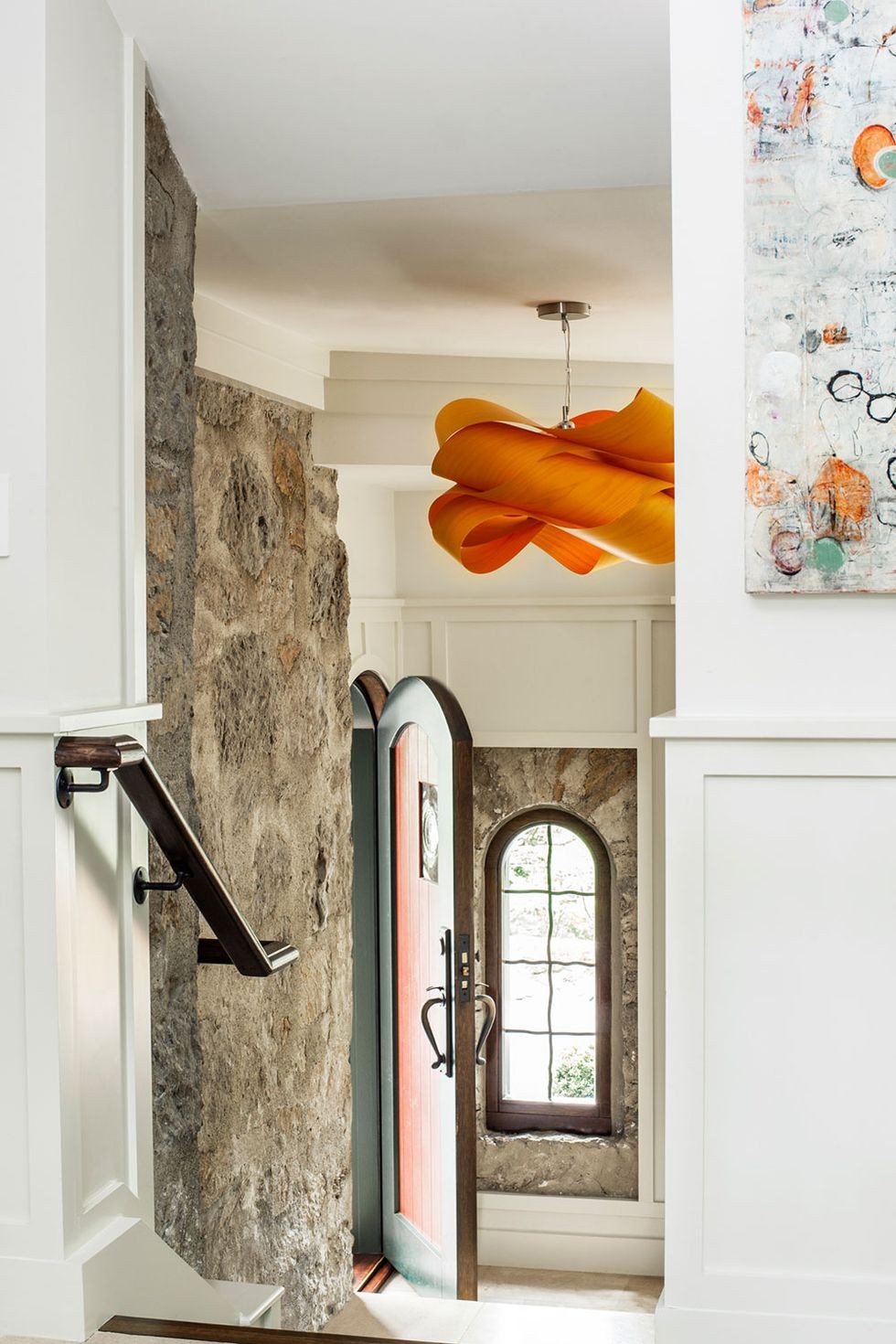
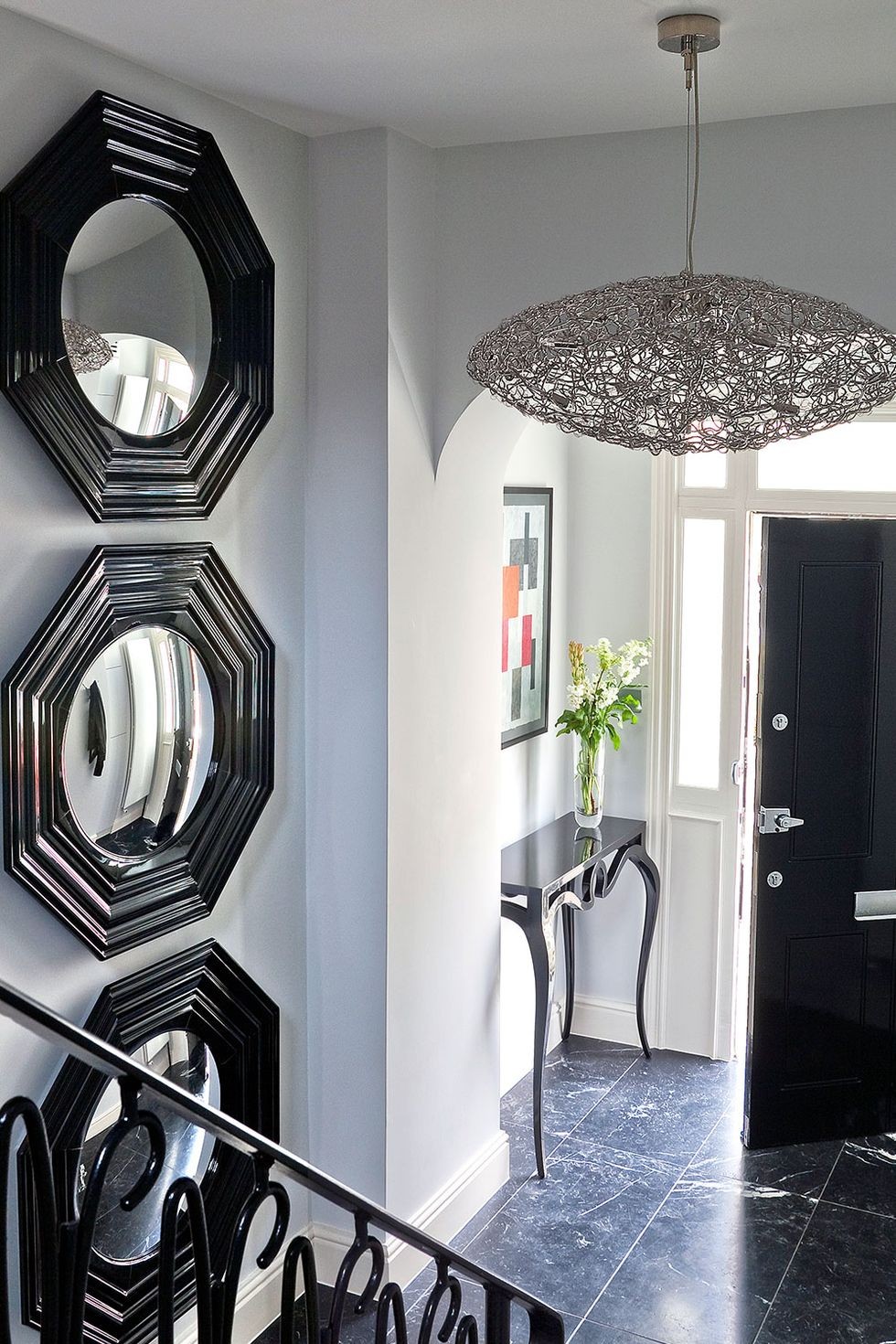


Conclusion
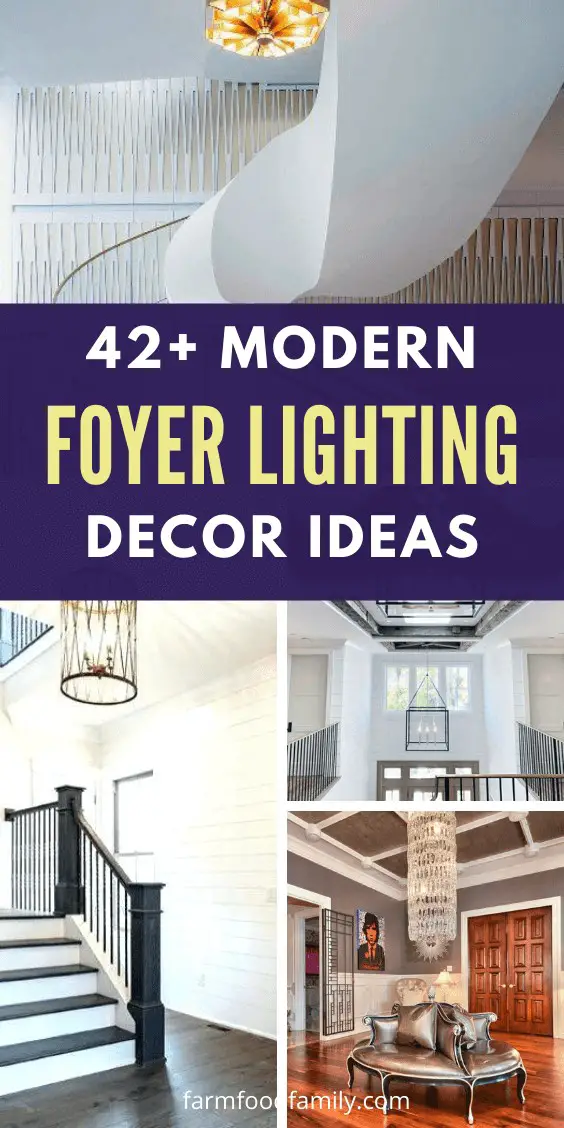
When crafting the overall ambiance of your home, foyer lighting plays a crucial role. It’s essential to strike the right balance by ensuring this aspect complements the lighting scheme in your living space. Consider how you can create a harmonious blend of light sources – including options like lights, chandeliers, or lamps – that not only provide sufficient illumination but also exude a sense of discreetness and personal touch.
Related Posts
When it comes to the holiday season, many of us are accustomed to seeing beautiful displays of Christmas lights. While some homeowners may choose to tackle the installation themselves, others may opt for professional services. But have you ever stopped to consider whether it’s customary to tip your Christmas light installers?
As we explore this etiquette and make considerations for a festive and bright holiday season, let’s also take a look at what it takes to become a lighting designer and some delightful DIY projects to get creative with mason jars. Meanwhile, landscape lighting installation guides and solar garden lights offer additional inspiration for illuminating your outdoor spaces.

